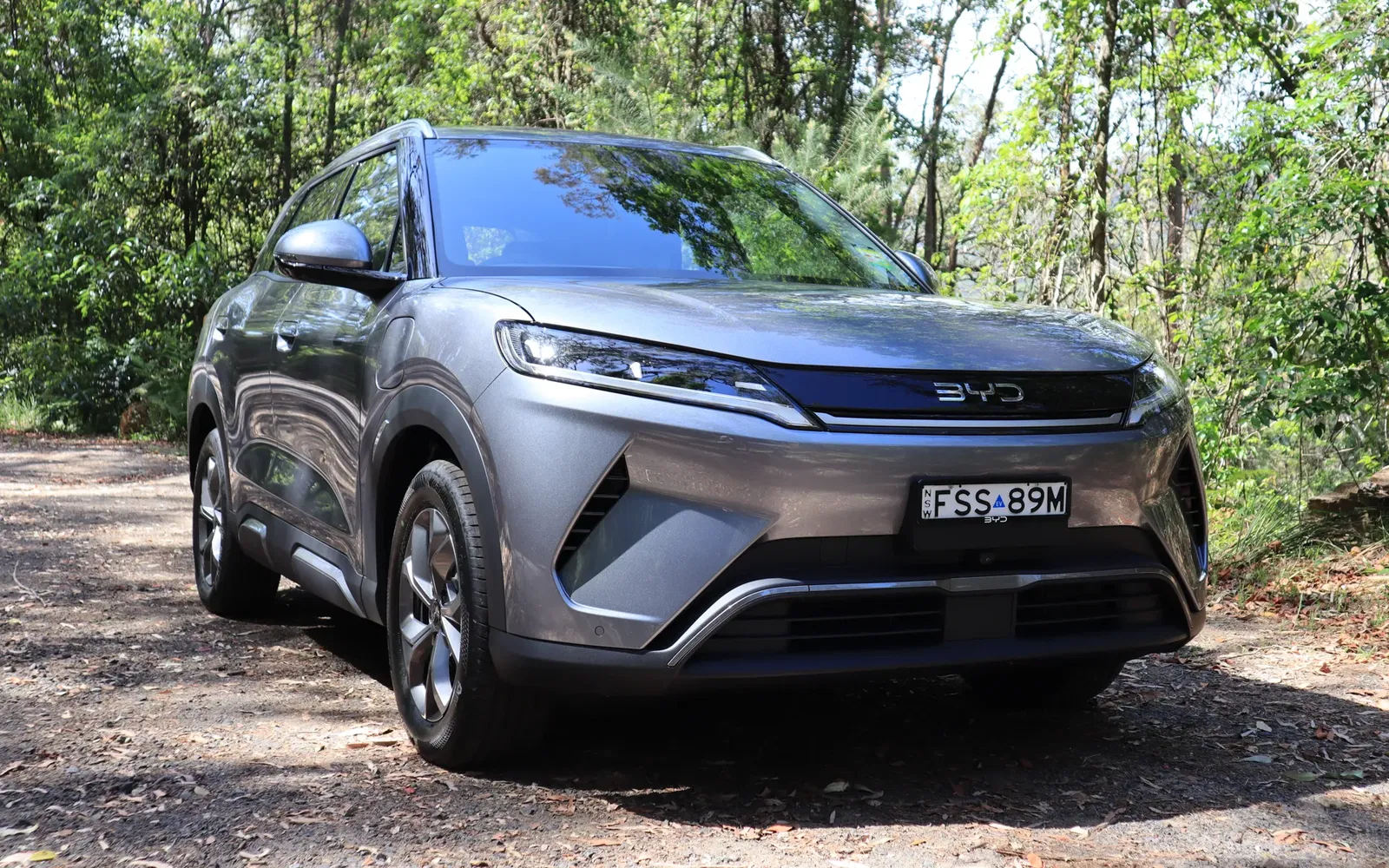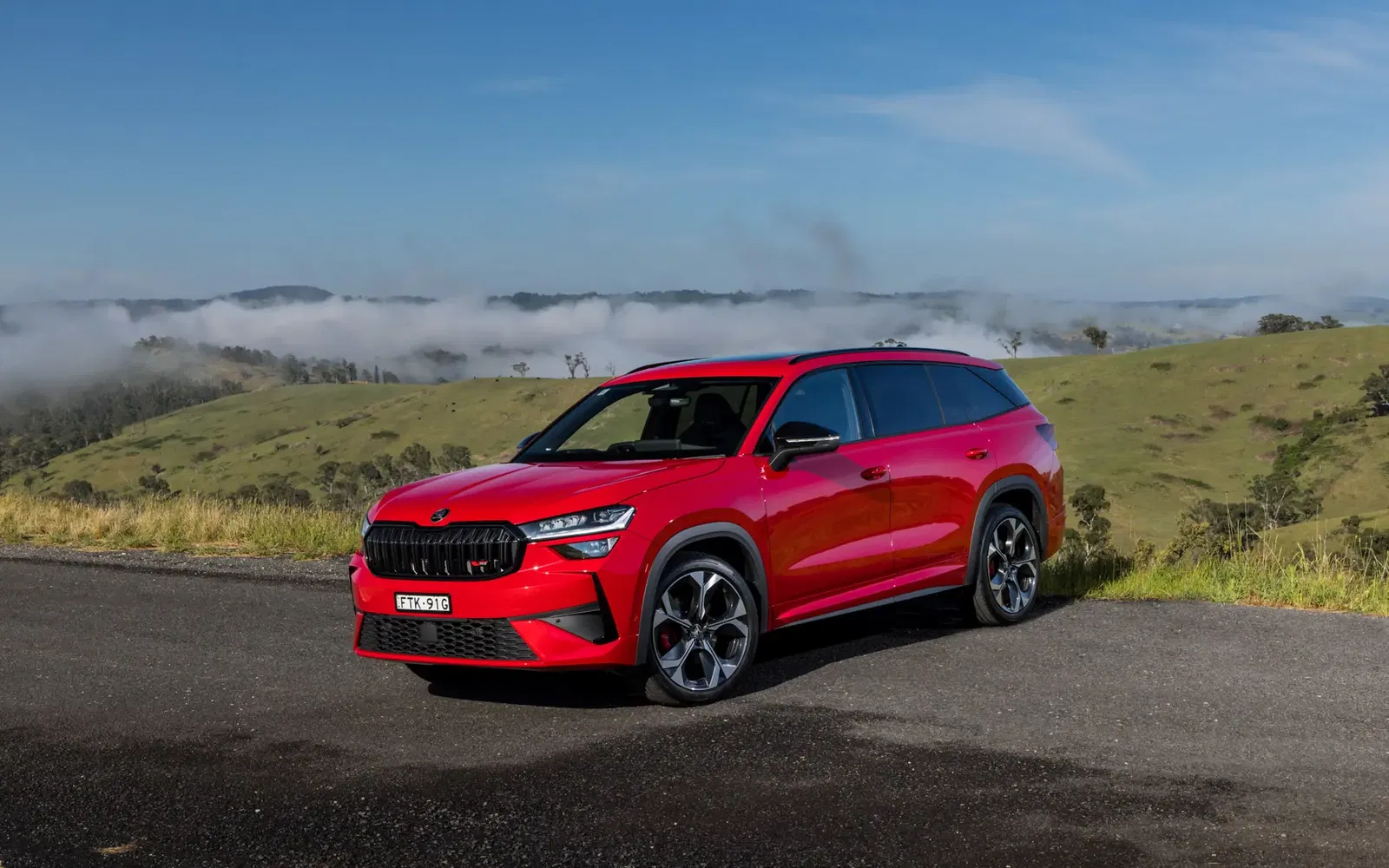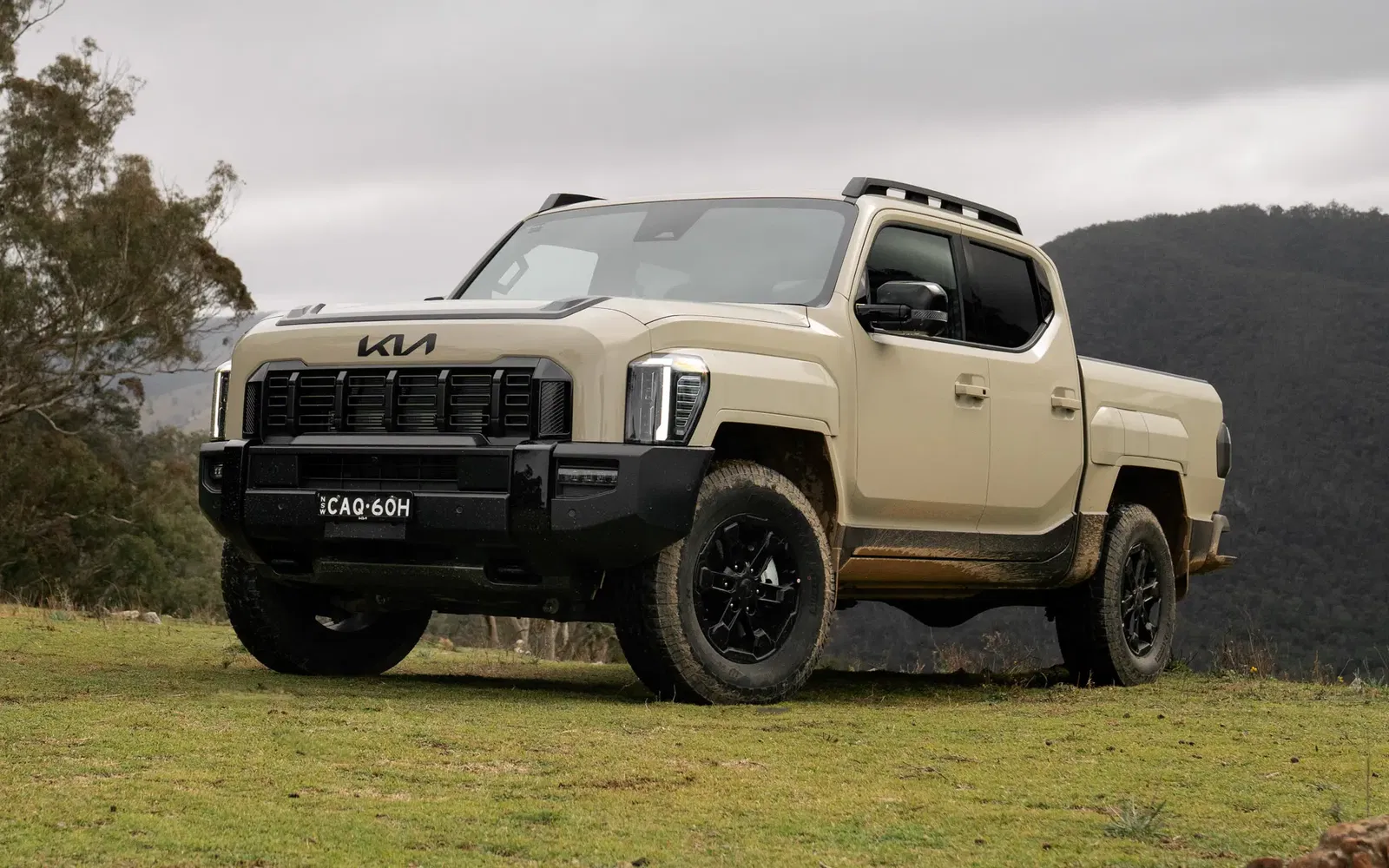
2025 Kia Tasman Review
Interior wow-factor and SUV-like comfort help Kia's first ute stand out, but its lacklustre diesel engine limits appeal for spec-focused buyers.
B+
UNGRADED

B+
UNGRADED

What people are saying:
Pros
- Class-leading interior design and tech
- Strong off-road ability
- Does ute things decently well (towing, payload, and tub space)
Cons
- Not the best at overtaking
- Heavily divisive styling
- More expensive than equivalent-spec competitors
The 2025 Kia Tasman marks the brand’s first foray into the fiercely contested dual-cab ute segment in Australia — a segment where brand loyalty, toughness, and proven performance often determine buying decisions. The stakes for Kia were high. Would the Tasman feel like a genuine competitor or just another SUV-based attempt dressed in ute clothing? Could it stand up to the benchmark Ford Ranger or the sales-dominating Toyota HiLux not only on paper, but in practice? These were the key questions going into the Tasman's launch.
Built on a new ladder-frame chassis, with ride and handling tuned specifically for Australian conditions by the legendary Graeme Gambold, the Tasman aims to bridge the gap between weekday tradie practicality and weekend lifestyle versatility. Kia needed to deliver more than spec-sheet promises — it had to earn a reputation in a category where many buyers wouldn’t hesitate to write off an unproven nameplate.
We tested the entire Tasman Pick-Up range on sealed roads, challenging off-road trails, and with a trailer in tow. Our mission was to find out whether Kia’s ute could meet — or exceed — the high expectations of the Aussie ute buyer in 2025.
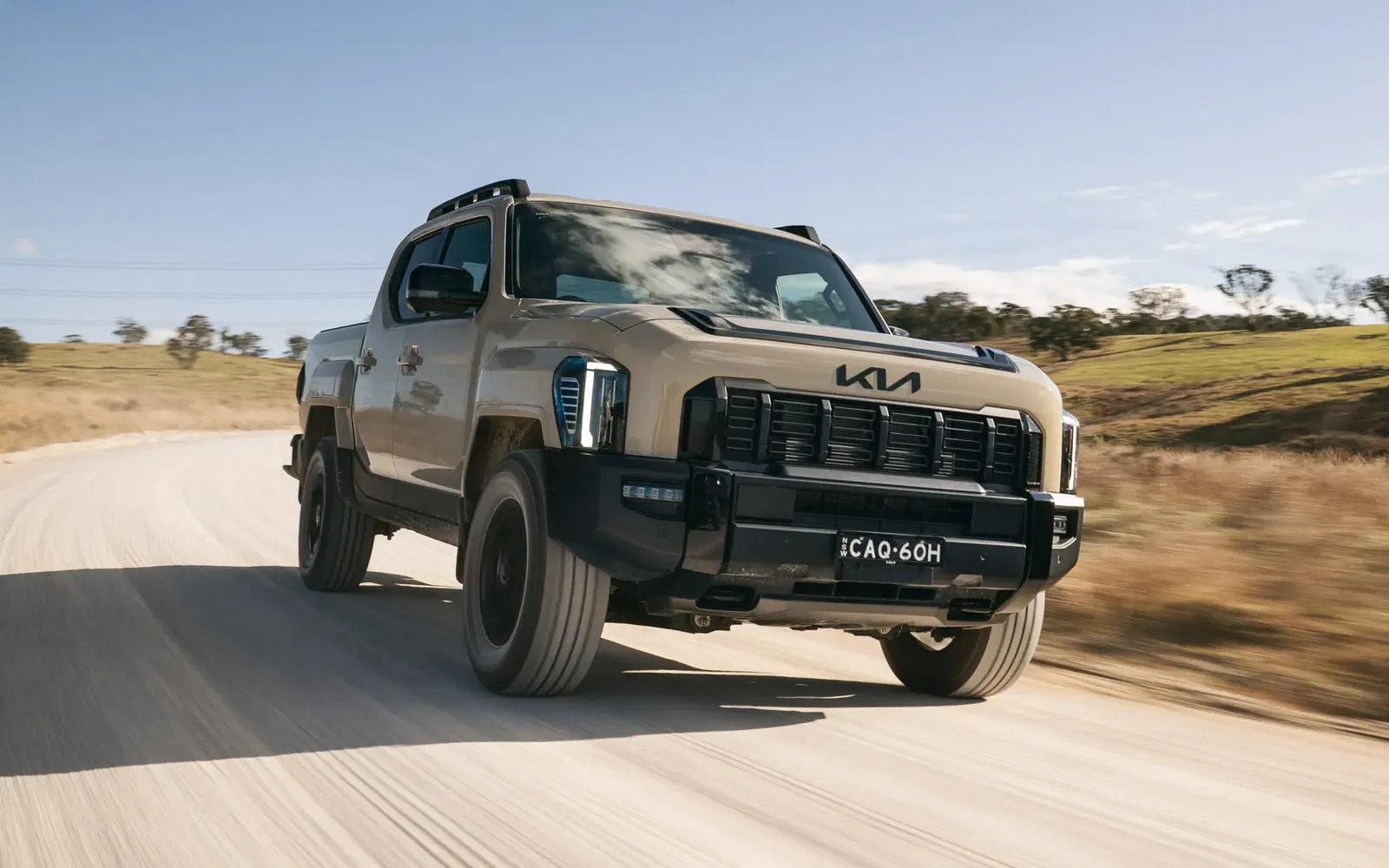
How much does the Kia Tasman cost?
The Tasman range starts at $42,990 drive-away for the base 4X2 S and stretches to $77,990 drive-away for the flagship X-Pro. That price makes the top-spec Tasman more expensive than a Bi-Turbo Ranger Wildtrak — a similarly equipped car with the same power output, but more torque. While SX+ and X-Line provide a decent middle ground, the SX is likely to be the best-value pick for most.
2025 Kia Tasman Pick-Up Pricing:
Tasman S 4X2 – $42,990
Tasman S 4X4 – $49,990
Tasman SX 4X4 – $54,490
Tasman SX+ 4X4 – $62,390
Tasman X-Line 4X4 – $67,990
Tasman X-Pro 4X4 – $74,990
Note: Prices exclude on-road costs.
Unconventional, Bold, and a Bit Divisive
At this point it feels a bit like beating a dead horse. Yes, the Tasman’s exterior styling is unconventional and likely to divide opinion — and in many ways, that’s by design.
Kia’s entry into the dual-cab ute space was always going to require a distinct visual identity to stand out against stalwarts like the Ford Ranger and Toyota HiLux.

The most immediately noticeable design element is the wide-set, low-slung headlight layout, positioned near the corners of the front bumper. While it gives the Tasman a unique, almost futuristic face, this decision also raises real-world concerns about off-road durability, with potential vulnerability to impacts and debris.
The grille design — particularly in the X-Line and X-Pro — is more squared-off and industrial, while the matte exterior accents of the X-Pro give off-road variants a more rugged tone.
In profile, the Tasman leans into its 5.4m length and close to 2m width with strong horizontal lines and squared arches, though I must that admit that southing about its on-road stance is a little off.

All variants feature LED daytime running lights, though only higher trims move to full LED headlight units. The X-Pro gets 17-inch black alloy wheels wrapped in all-terrain tyres, and a ground clearance of 252mm — one of the best in class.
S and SX trims feature halogen headlights and simpler wheel designs, making the Tasman’s base styling more subdued.
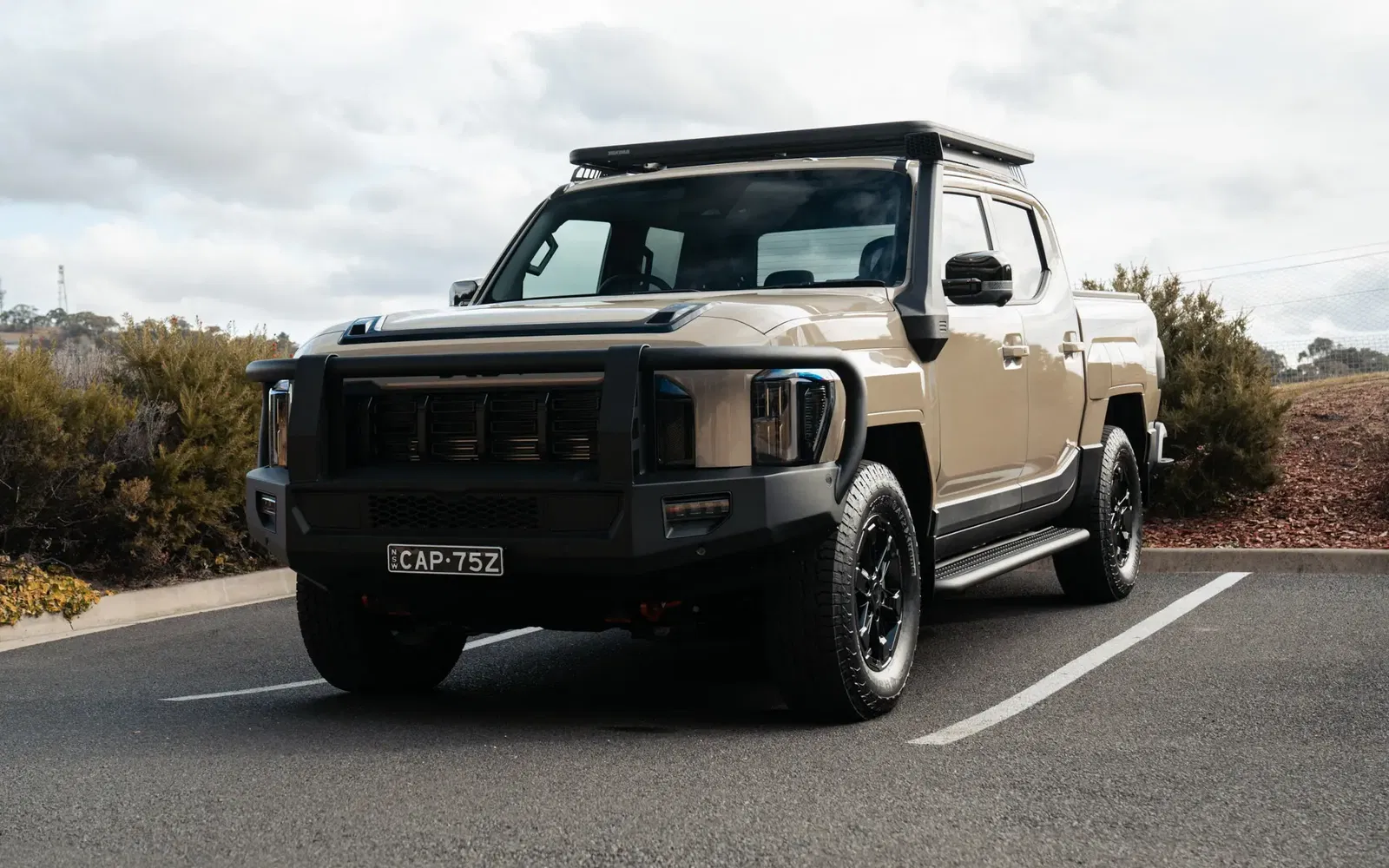
Kia also offers a wide range of factory accessories from launch, including roof racks, snorkels, and bulbars.
The wheel arches, particularly in the standard black plastic finish, have an oddly straight cut that many found jarring in person. Aware of the criticism, Kia offers optional body-coloured wheel arch extensions to help integrate the arches more smoothly into the vehicle's overall look — a smart move that visually ties together the side profile.
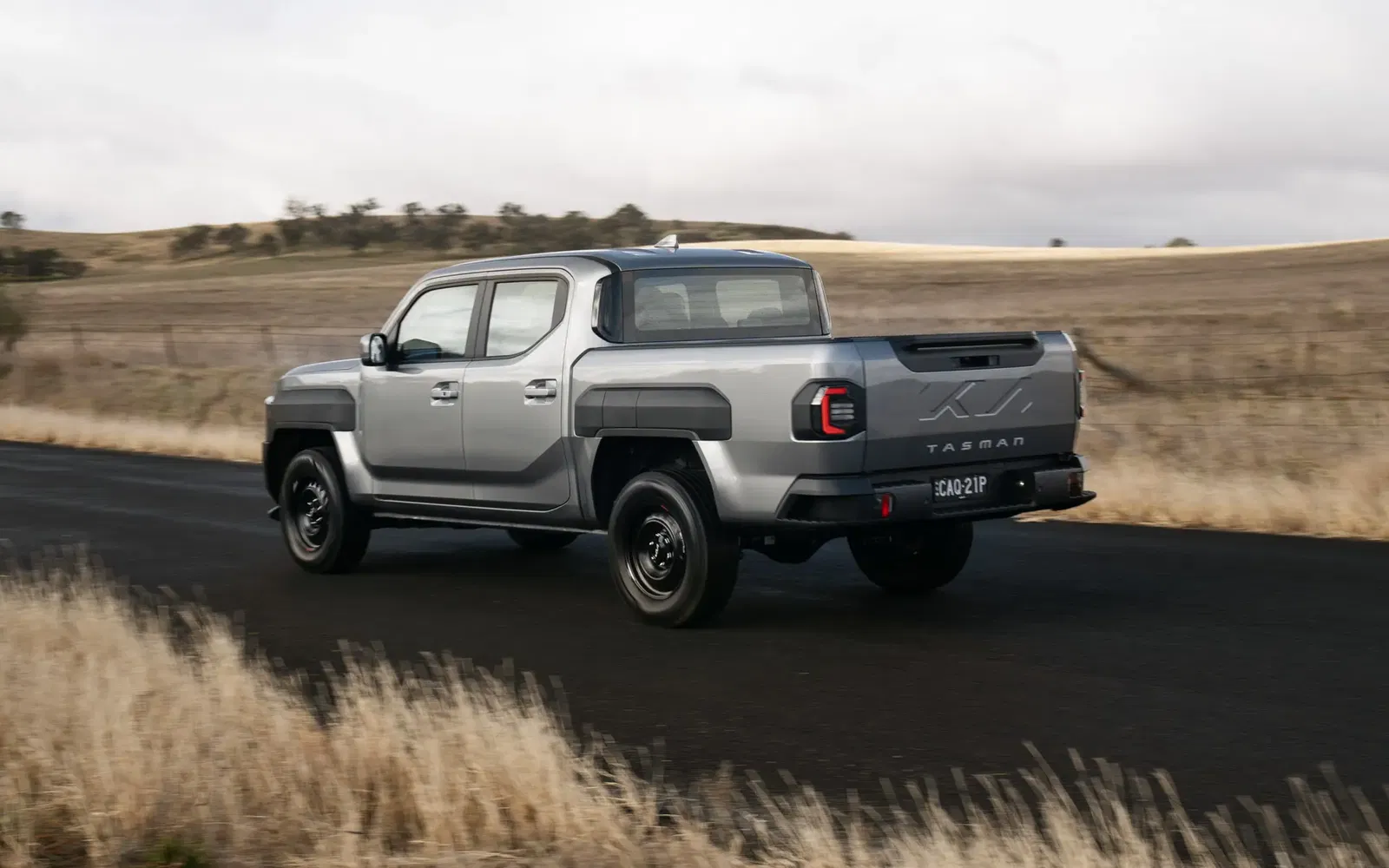
Still, in a ute segment where visual toughness often defines first impressions, the Tasman’s aesthetic choices may divide buyers more than Kia hoped.
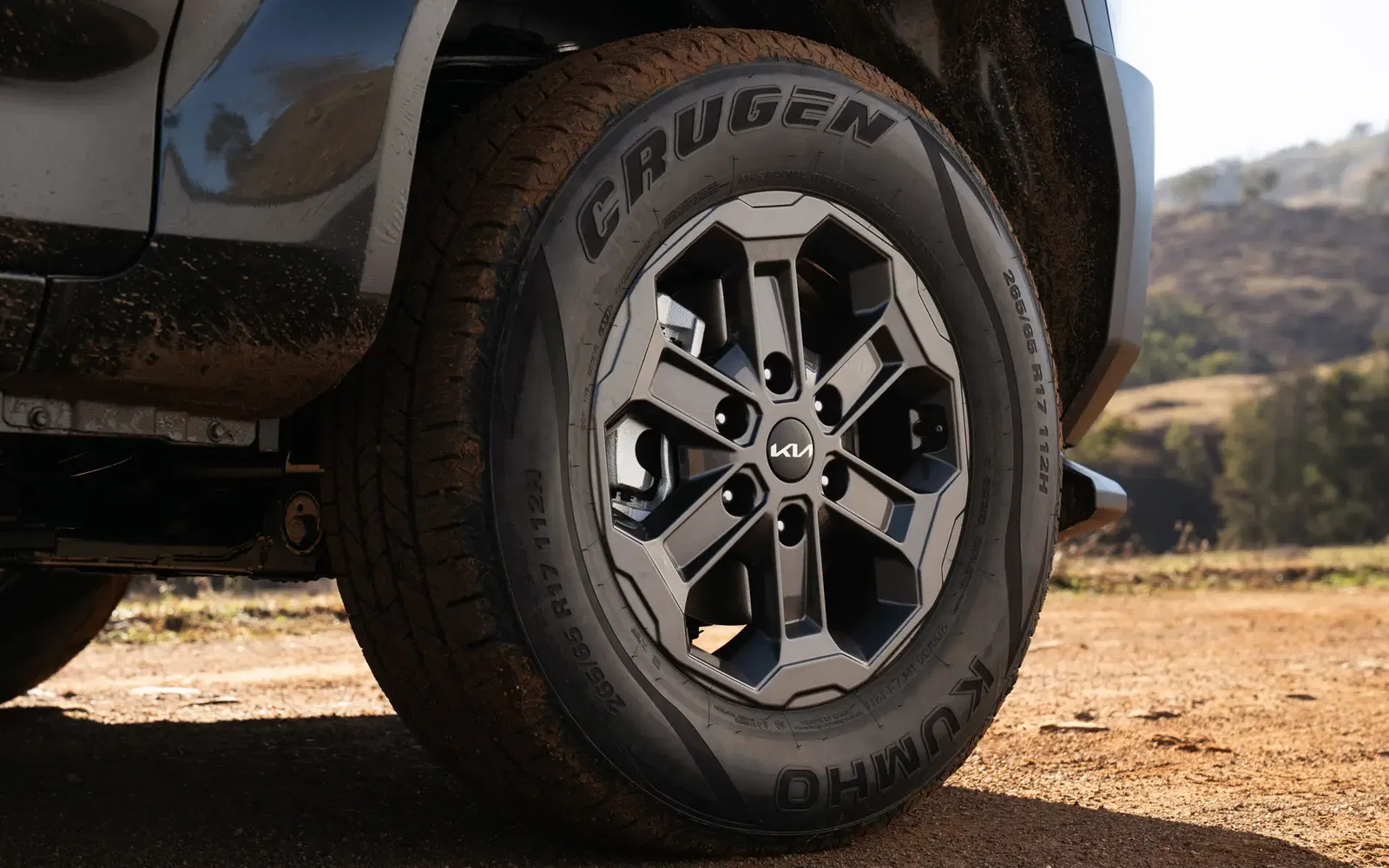
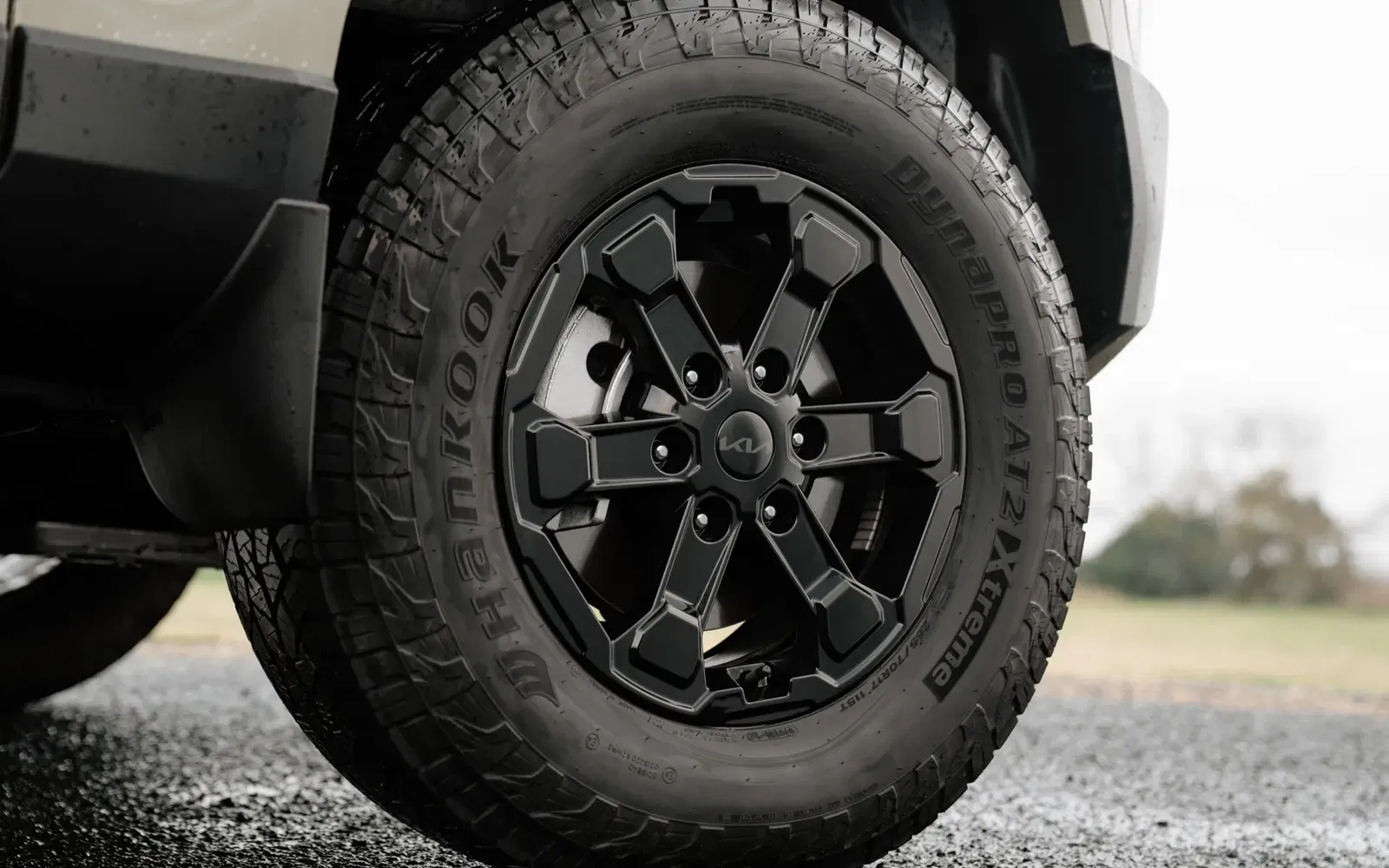
Ute Meets Premium SUV
Where Kia really impresses is inside the front cabin — a space that clearly borrows more from its flagship SUVs than its workhorse ute competitors. Sitting inside the Tasman, especially in the higher grades like SX+ or X-Pro, feels more like being in a Sorento than a typical dual-cab.
The materials are soft to the touch in most places, buttons and switches feel properly damped and well-placed, and build quality across the board is excellent.

Kia’s use of a twin 12.3-inch display setup across the range — comprising a fully digital instrument cluster and a large central infotainment screen — provides a clear visual centrepiece, in addition to dual wireless smartphone chargers (X-Line and X-Pro).
The Harman Kardon sound system in the X-Pro grade offers great clarity and punch for a ute, and even base models benefit from solid sound quality.
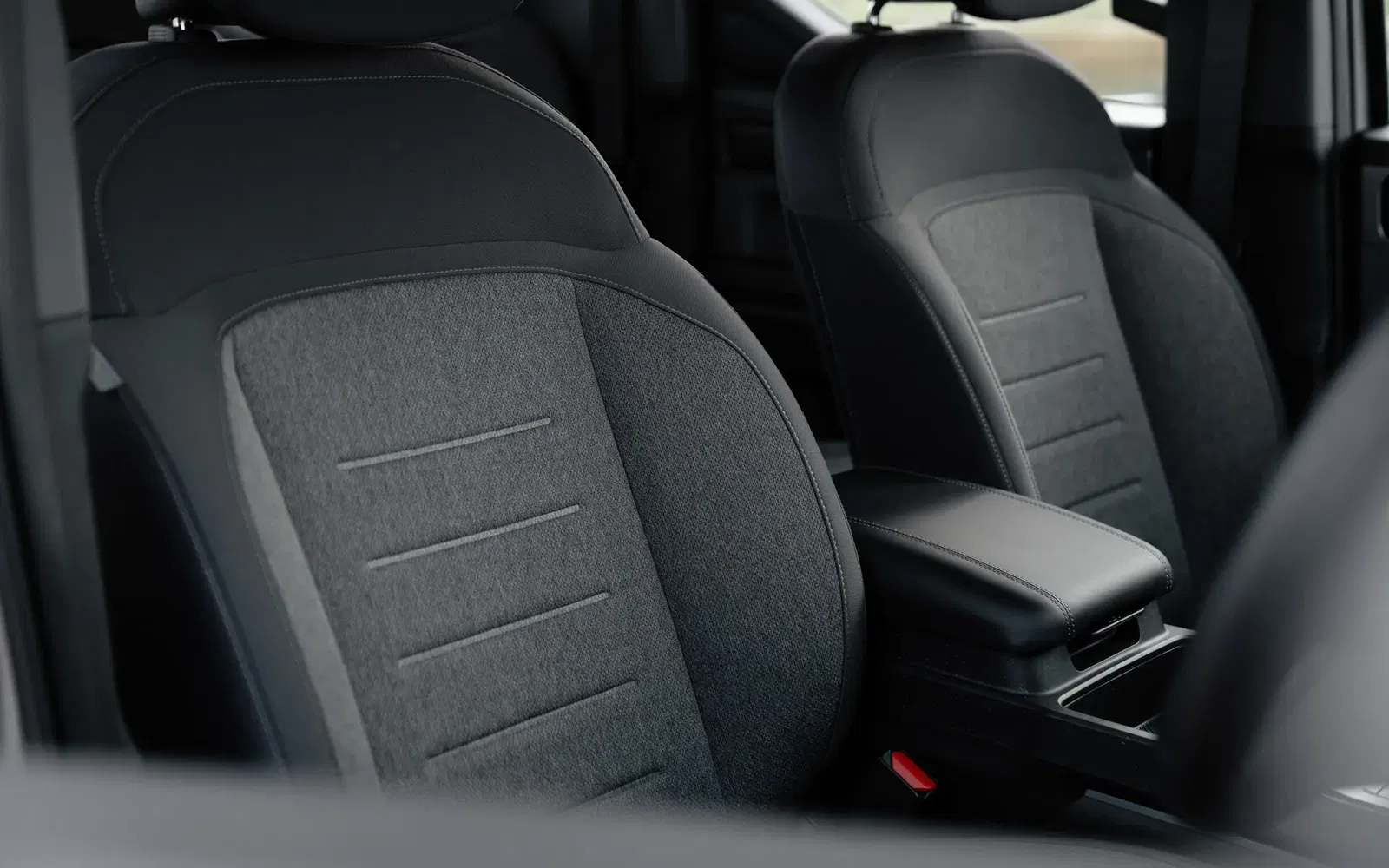
Storage practicality is also impressive. The centre console is huge, and it cleverly folds out to become a table for laptops, or perhaps a cheeky 24-pack of McNuggets.
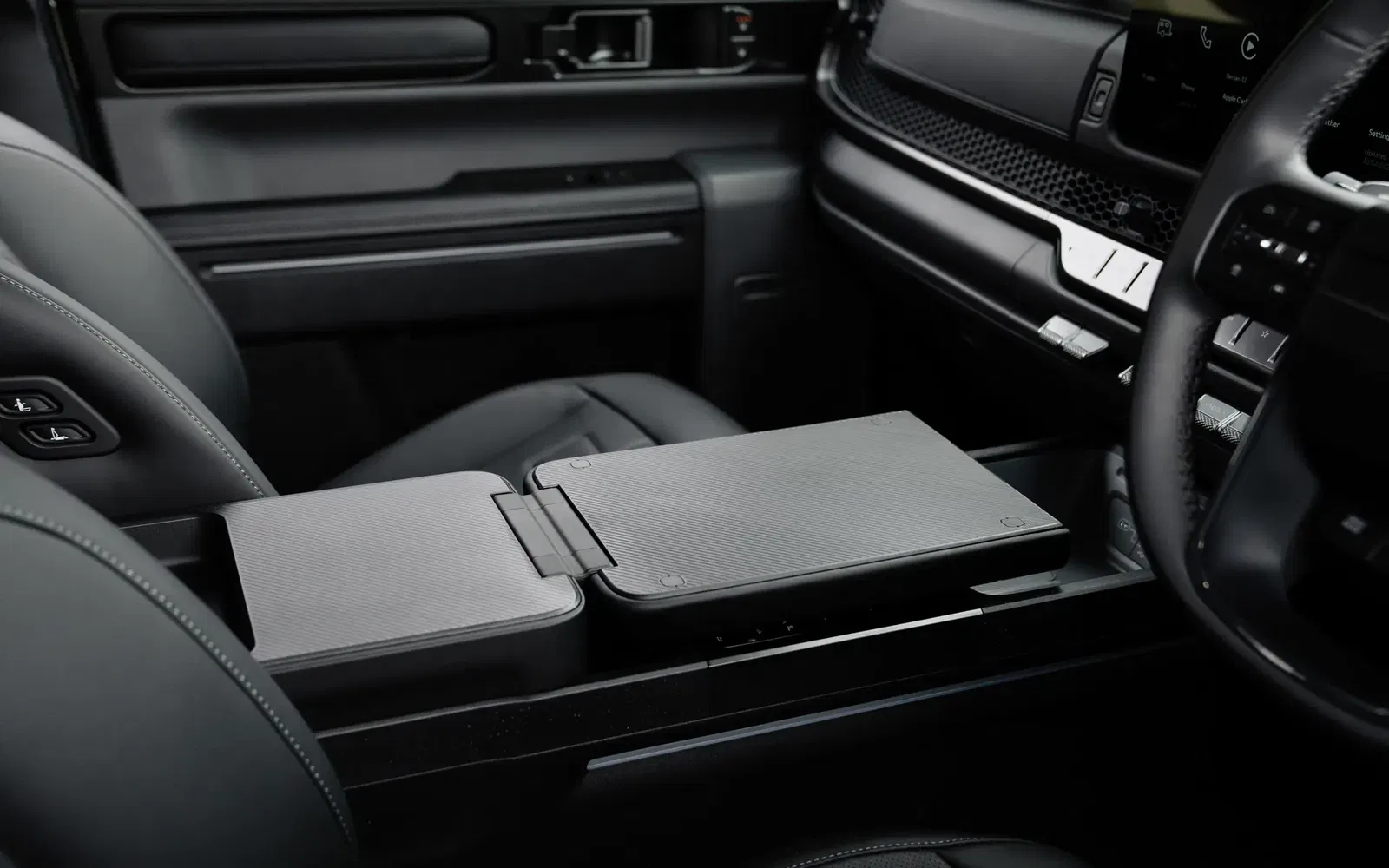
In terms of comfort, the quilted leather-appointed seats (from X-Line up) are plush, with ventilation up front and heating both front and rear in top trims. Even the fabric seats in the S and SX variants feel decently supportive. The cabin lighting is configurable and subtle, adding to the premium ambience at night.
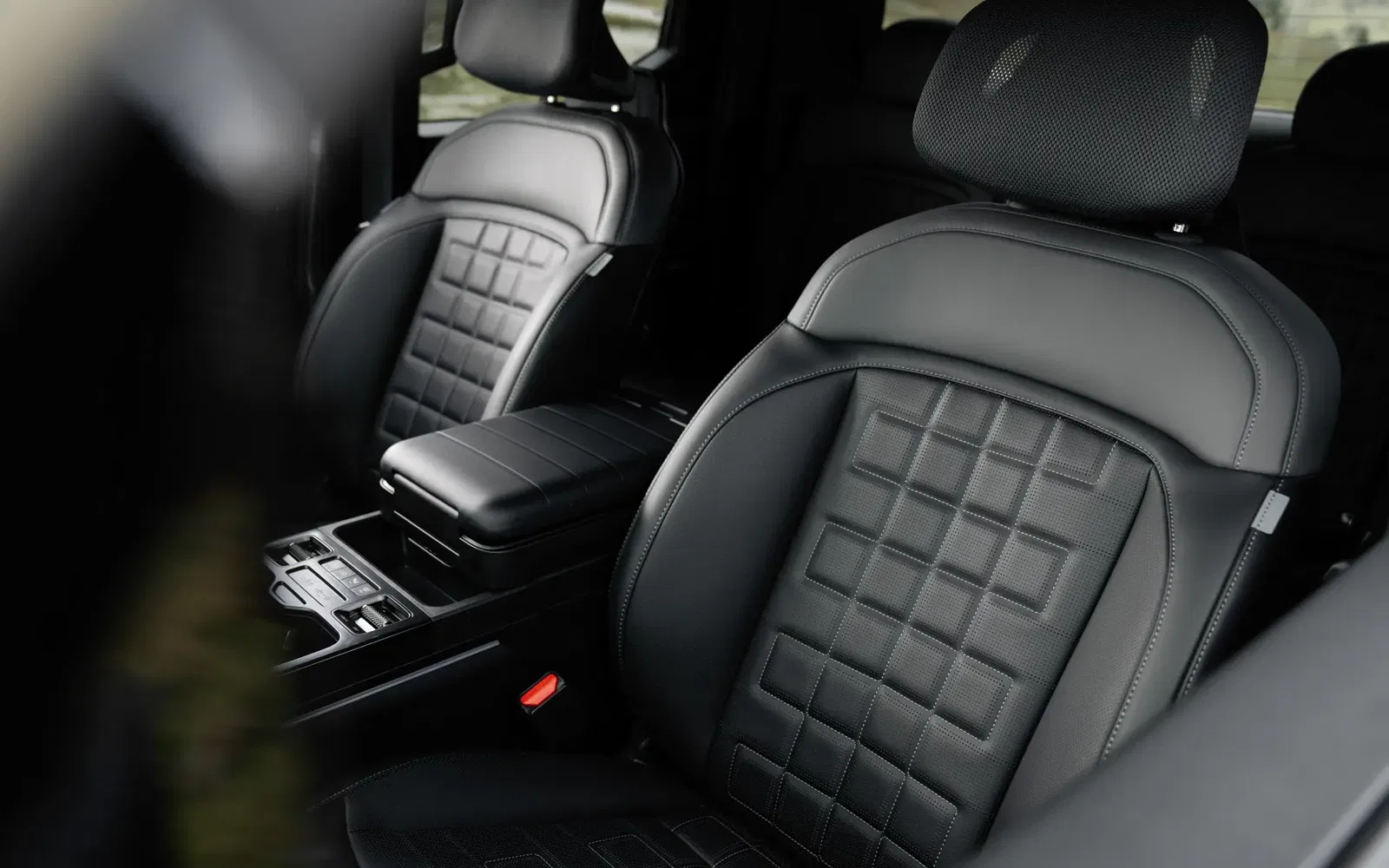
As a whole, this is easily the most polished and luxurious interior available in a ute at this price point, particularly for family or lifestyle buyers who expect more than just rugged utility from their dual-cab.
Passenger Approved, Tradie Friendly
The rear seat experience in the Tasman is a noticeable step up from what’s typically expected in the dual-cab ute segment.
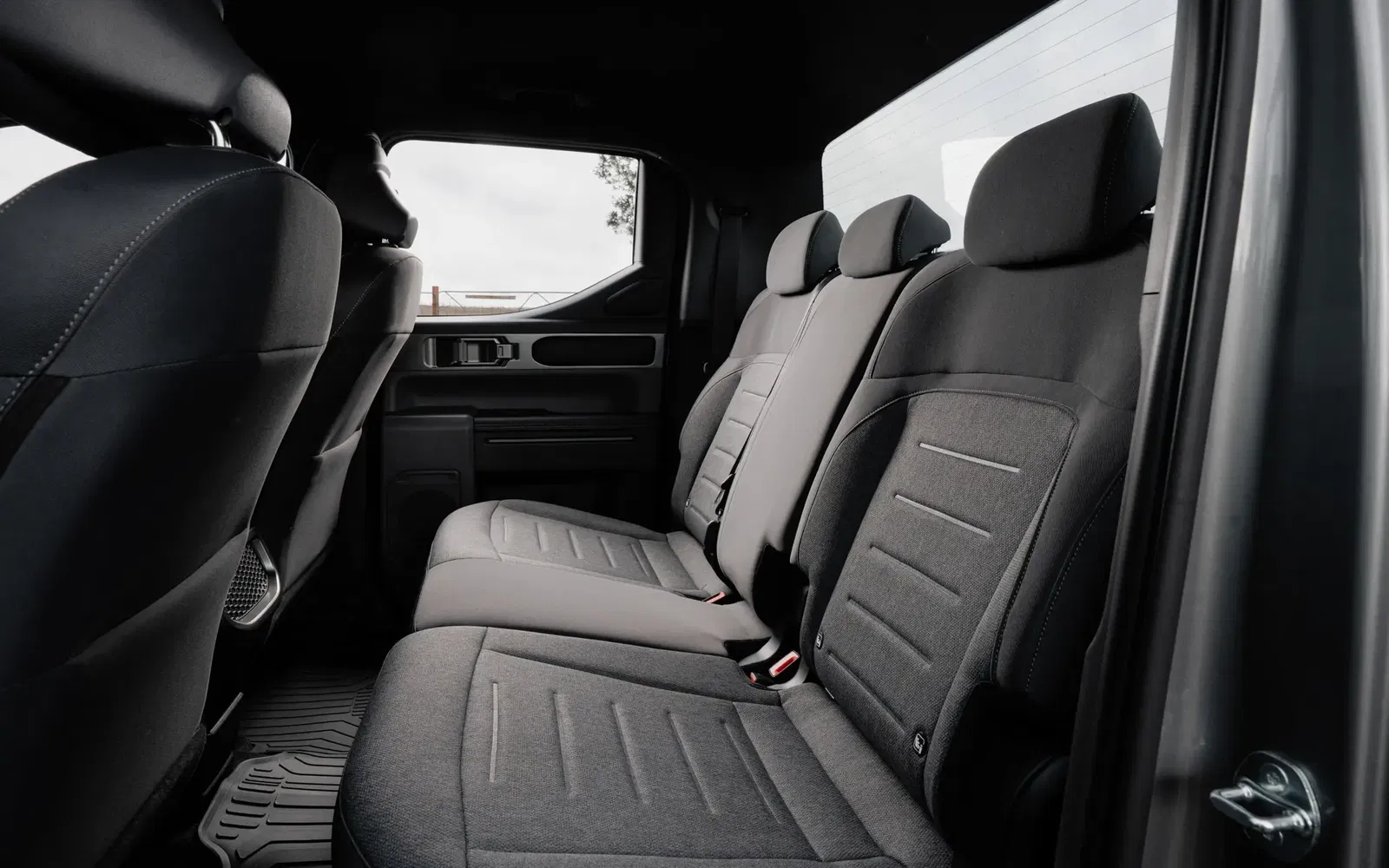
The extended wheelbase helps deliver genuinely impressive rear legroom, offering enough space for adult passengers to stretch out comfortably.
X-Line and X-Pro grades enhance the comfort further by including sliding and reclining second-row seatbacks, a standout feature for a ute.
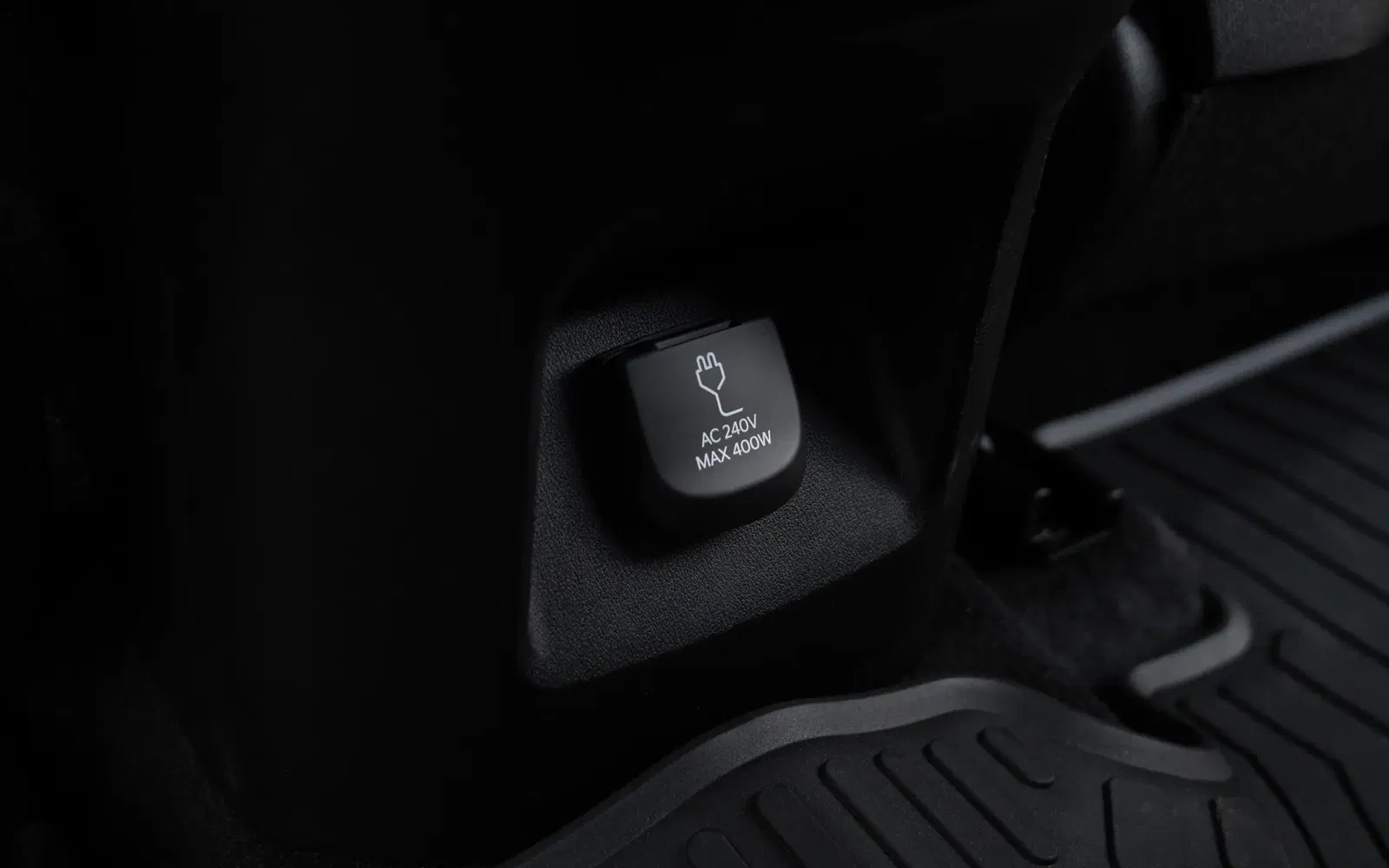
It’s also worth noting how the upright seating position benefits from excellent visibility out of the large side windows, along with dedicated rear air vents from the SX+ grade and up — another point in favour of passenger comfort. This makes the Tasman one of the few utes where the second row genuinely feels considered, not just included as an afterthought.
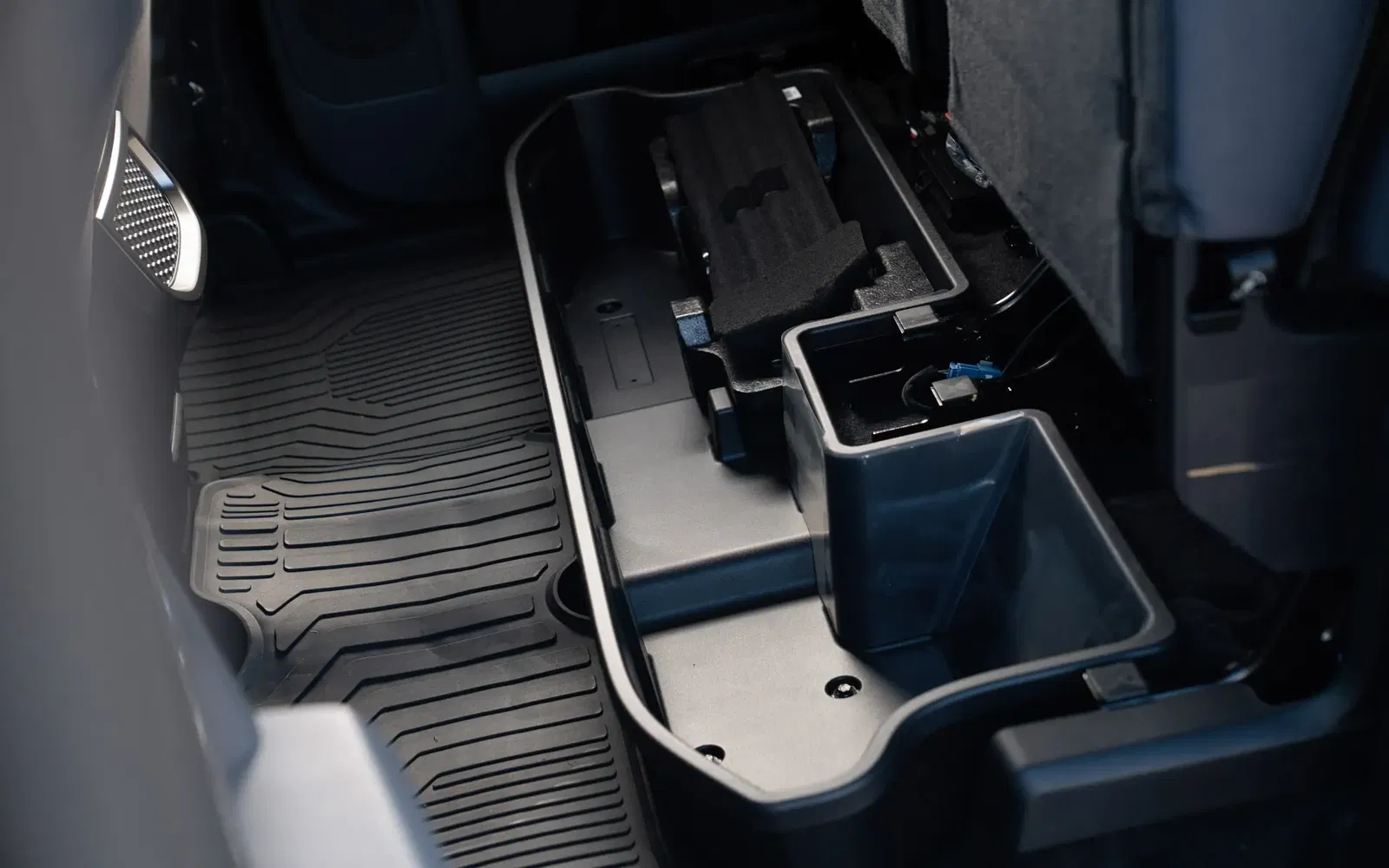
Heated rear seats are included in these upper trims, as well as USB-C ports integrated into the seatbacks, a 240V outlet for charging tools or laptops, and a fold-down centre armrest. Smart storage solutions — including neoprene zip-up map pockets, under-seat trays, and door bins with bottle holders — aim to boost practicality, but the zippered neoprene pockets do raise some usability concerns. While they’re great for protecting contents from the elements, they aren’t especially suited to sliding in larger items like laptops or documents, making them less convenient for day-to-day utility.
A Ute That Works
With a 1512mm-long tub, 1572mm width between the arches, and a 540mm depth, the Tasman’s tray comfortably accommodates an Aussie pallet.
In fact, Kia quotes a best-in-segment tub capacity, at 1336 litres (SAE) on the S and SX grades.
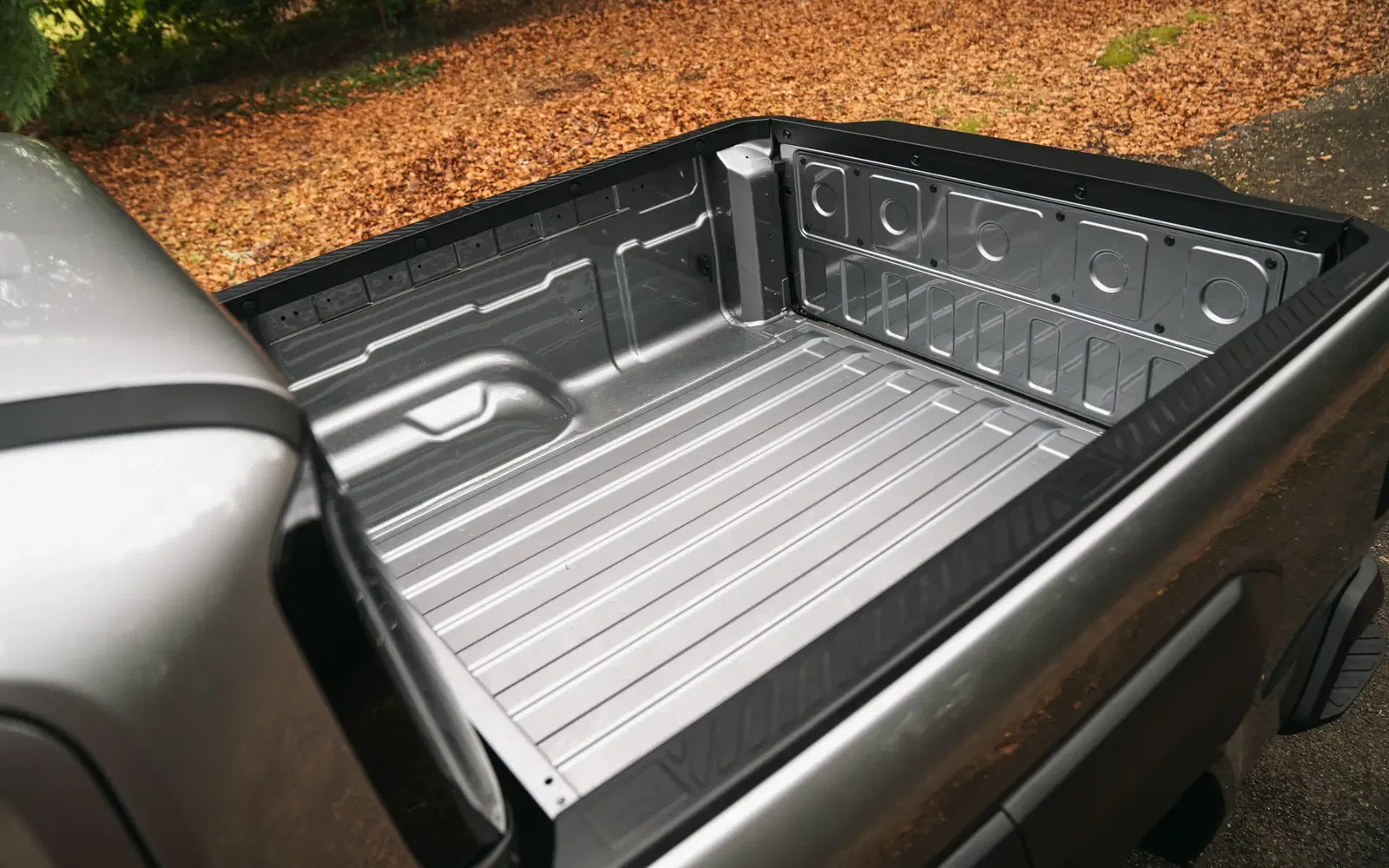
All variants include tie-down points and a soft-open tailgate, but only higher trims like the SX+ and above include a spray-in liner as standard, soft-open tailgate, and 12V/240V outlets in the tub.
Payload ranges from 1124kg in the S to 1012kg in the X-Pro, depending on spec.
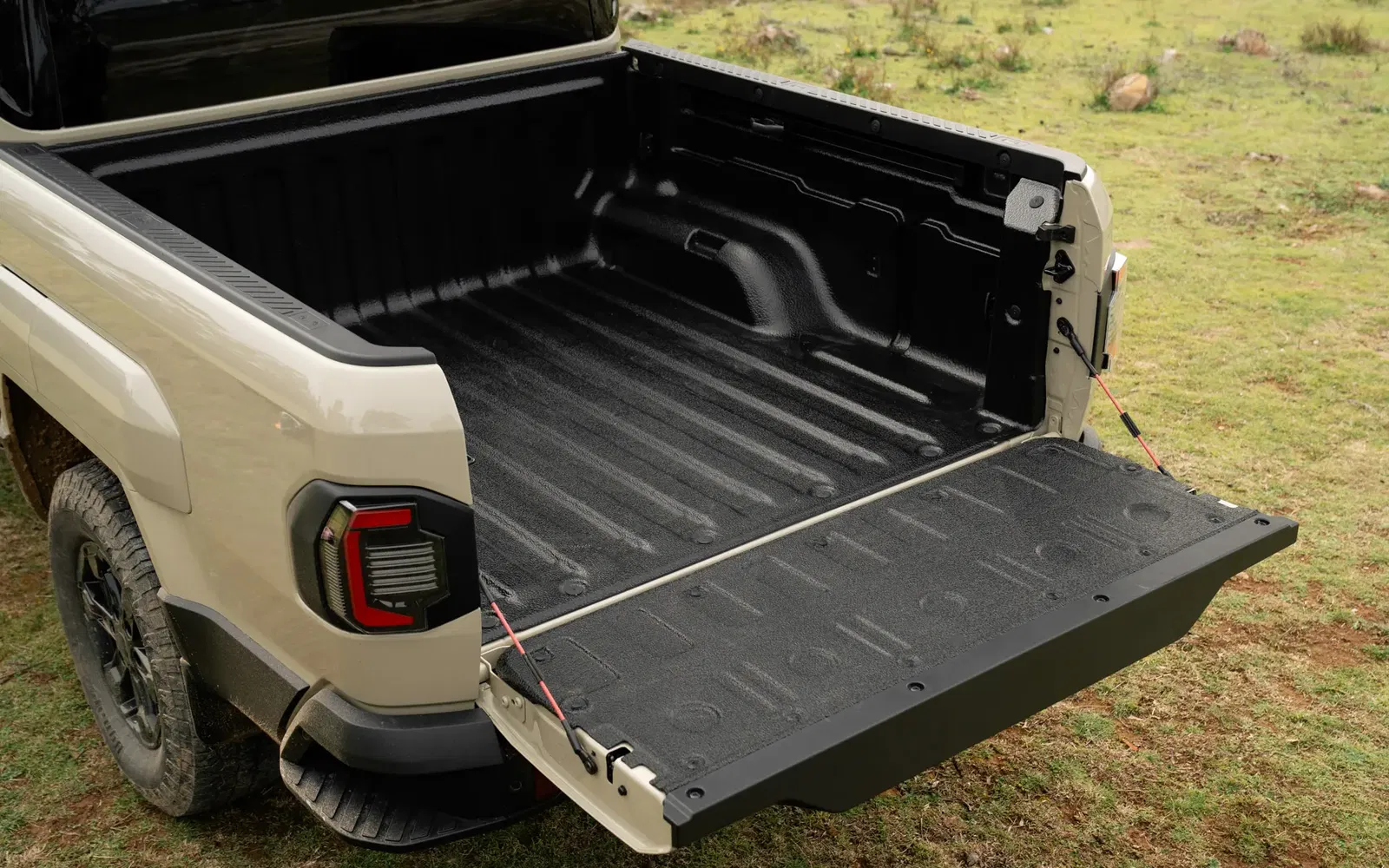
GCM sits at 6200kg across the board, with a Gross Vehicle Mass (GVM) of 3250kg.

Kia’s range of factory accessories — including bullbars, canopies, tonneau covers, snorkels, and sports bars — are all backed by the full vehicle warranty.
Falls Short of Rivals
The Tasman's 2.2-litre turbo-diesel four-cylinder engine puts out 154kW and 440Nm.
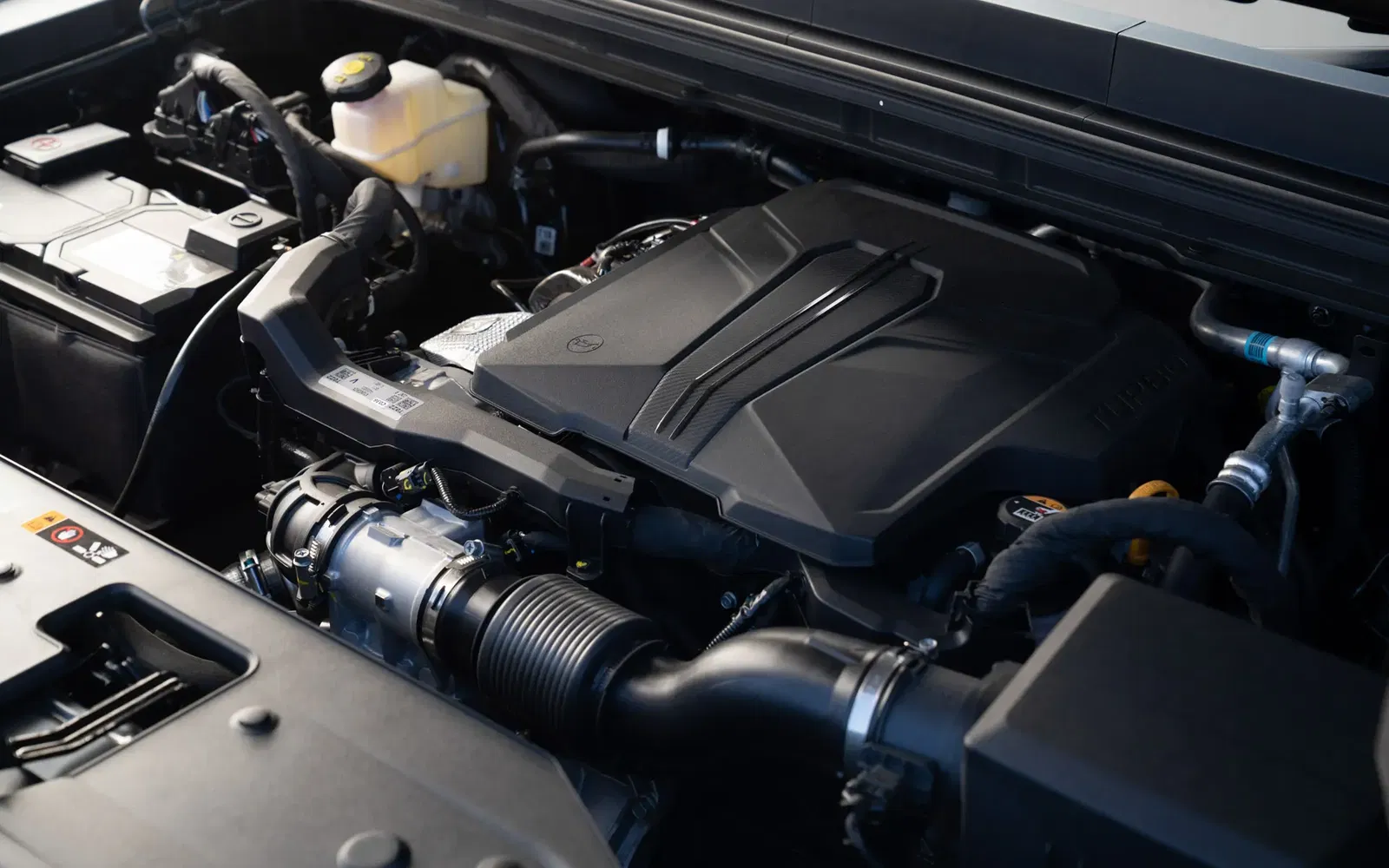
While it’s more refined than many expected and pairs nicely with the 8-speed auto, it simply doesn’t have the grunt of competitors like the Ranger Bi-Turbo (500Nm) or the V6 (600Nm).
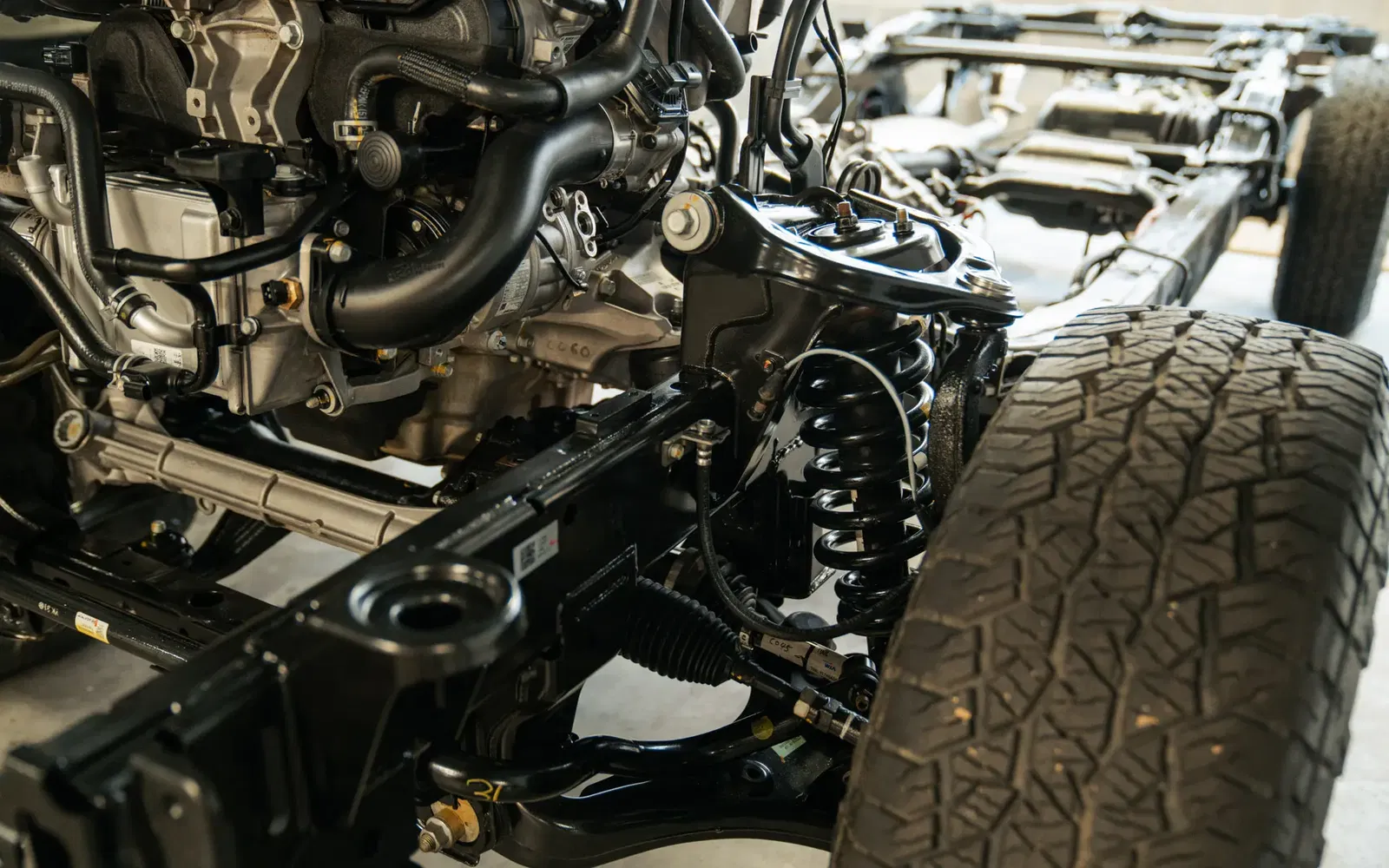
Overtaking on the highway requires planning, and our 0–100km/h test returned a time just over 10 seconds.
That said, throttle response is decent in normal driving, and fuel use hovered around 8.8L/100km in the SX 4X4 during our testing.
Tall Poppy Syndrome
In a market where standing out can attract criticism, the Tasman’s on-road manners reflect a ute that prioritises comfort and tech over raw power — for better and worse.
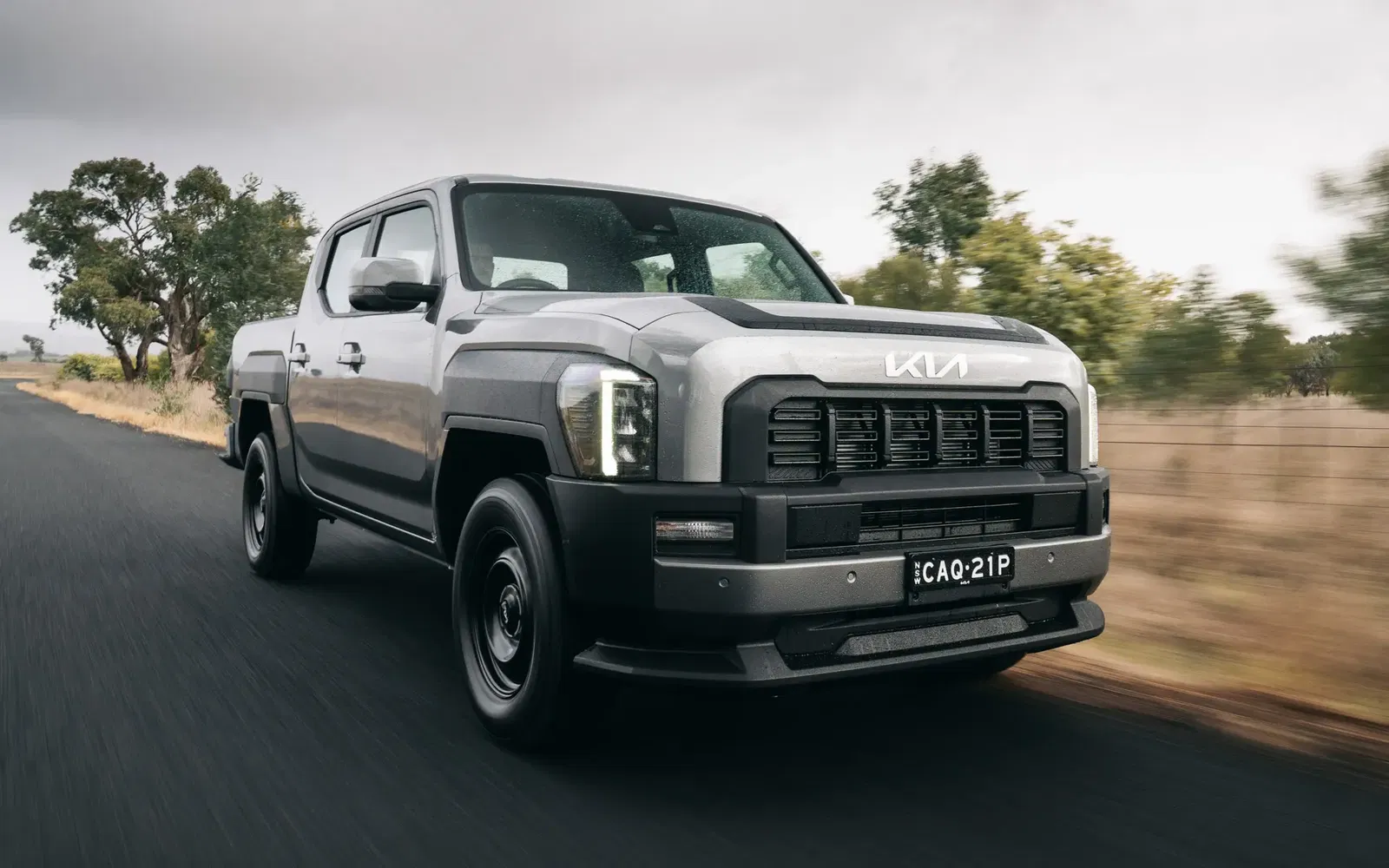
While Kia's first ute shines in cabin comfort and off-road competence, its on-road driving dynamics are a more mixed bag. The Tasman rides well for a ladder-frame ute, particularly in SX+ and X-Line trims, where tuning for Australian conditions really pays off. Body control is solid over undulating country roads, and the suspension feels composed even with an empty tray — a testament to the local tuning efforts led by Graeme Gambold.

Steering is light enough for city use but still delivers enough feedback on highways. The Tasman doesn’t feel particularly agile, but it’s predictable and easy to drive, with good outward visibility and thoughtful calibration of driver aids like adaptive cruise and lane centring. Noise insulation is also impressive, with road and wind noise kept well in check.
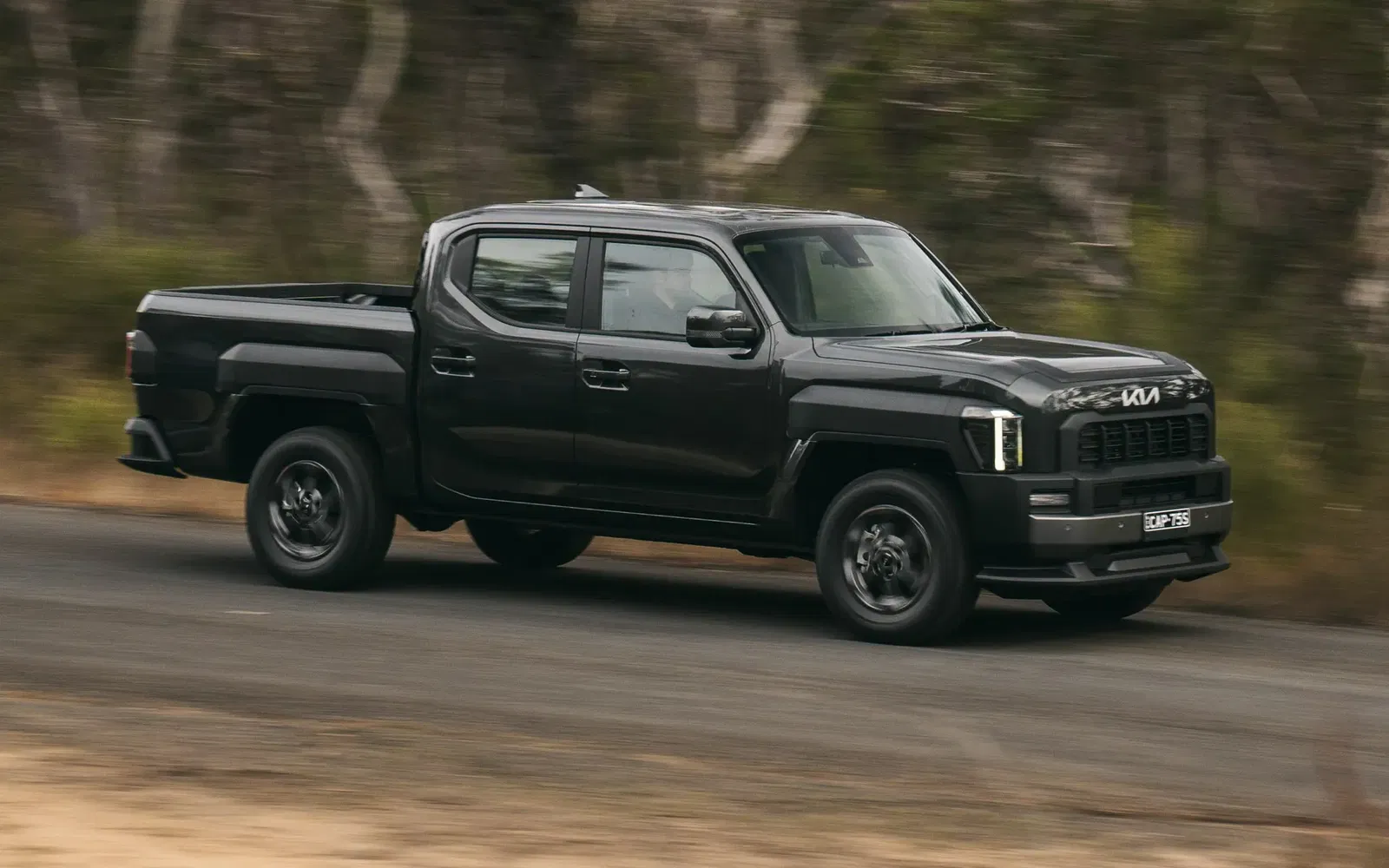
Where the Tasman falls short is in acceleration and overtaking performance. The 2.2-litre diesel delivers adequate torque in low- to mid-range speeds, but it runs out of puff when pushed harder — especially on inclines or when overtaking at highway speeds. This isn’t helped by the 8-speed auto’s occasional hesitation under load. In stop-start traffic, however, the drivetrain feels smooth and unobtrusive.
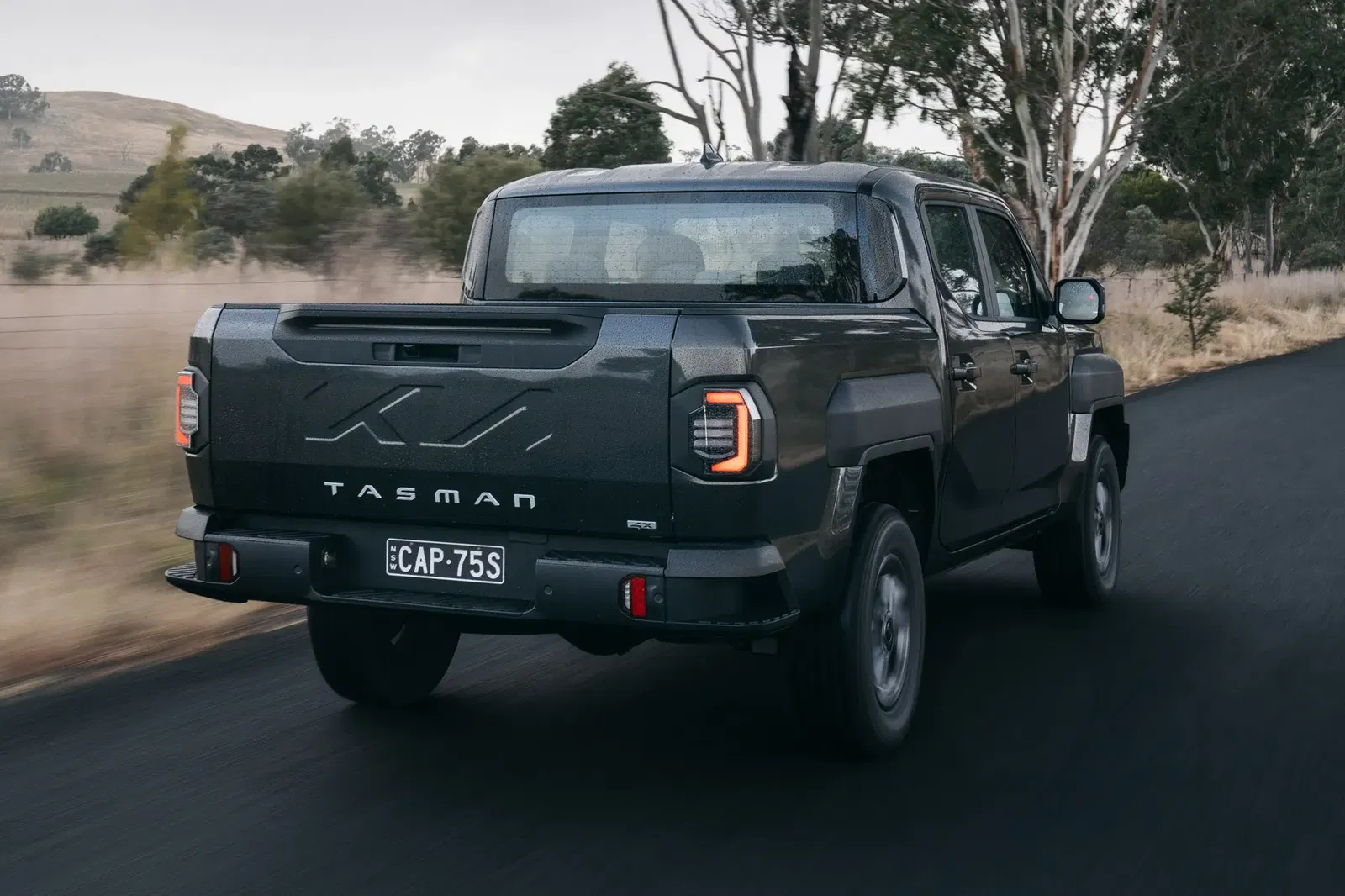
Overall, the Tasman’s on-road performance is more than acceptable for lifestyle and tradie use, but buyers expecting the punch of a V6 or more refined turbo-diesel may come away underwhelmed. That said, for buyers prioritising cabin refinement, tech, and easy road manners over brute power, the Tasman is one of the more polished on-road performers in its class.
Confidence-Inspiring in the Rough
Kia clearly aimed to make a strong first impression with the Tasman’s off-road credentials — and it largely delivers, particularly in the X-Line and X-Pro grades.
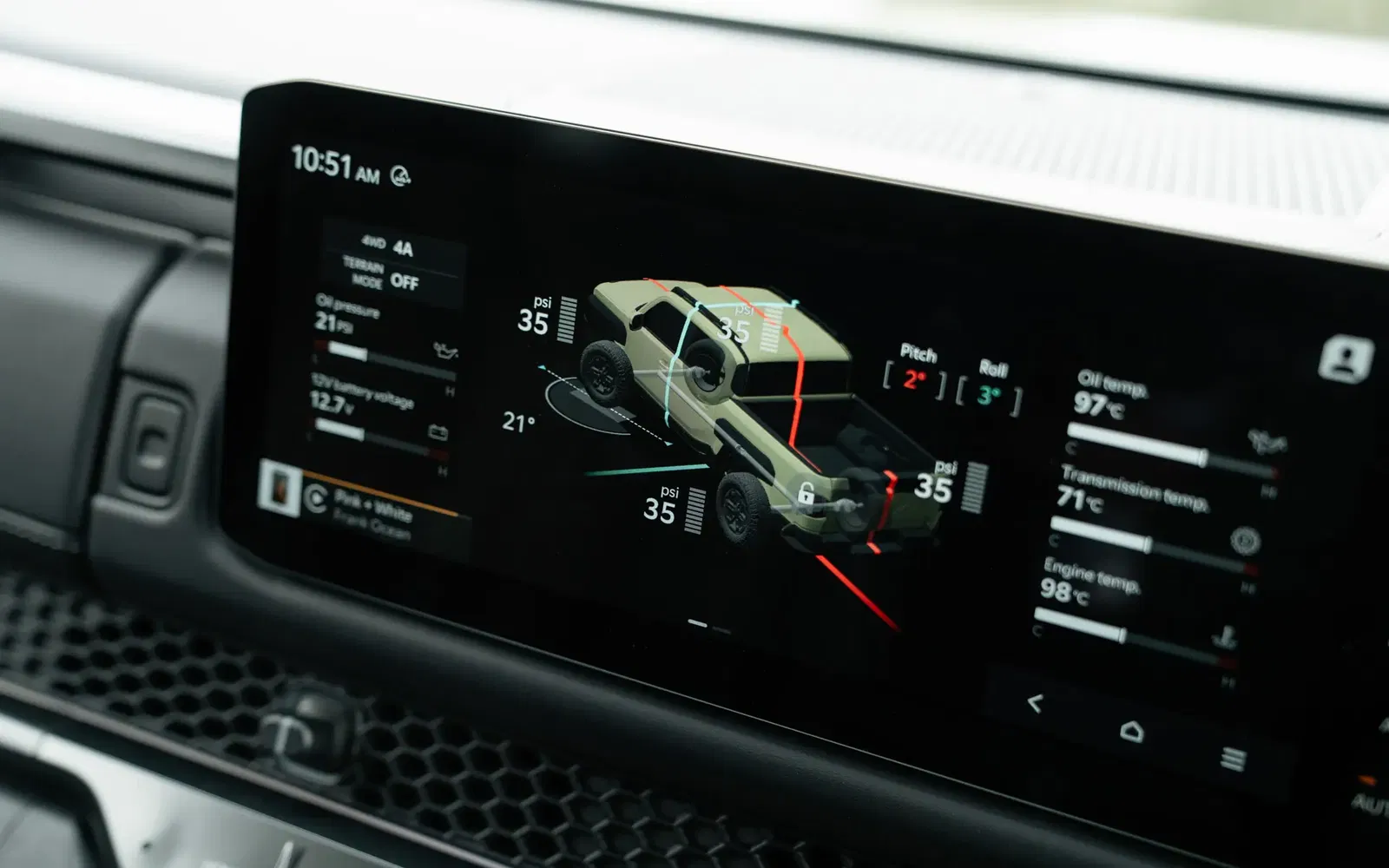
Our testing spanned everything from deep ruts and loose gravel to rocky climbs. The Tasman X-Pro, in particular, proved impressively capable out of the box, thanks to its standard all-terrain tyres, steel underbody protection, and up to 252mm of ground clearance. The combination of a mechanical rear diff lock and Kia’s software-based traction management system gave it a level of composure that rivals off-road focused competitors.
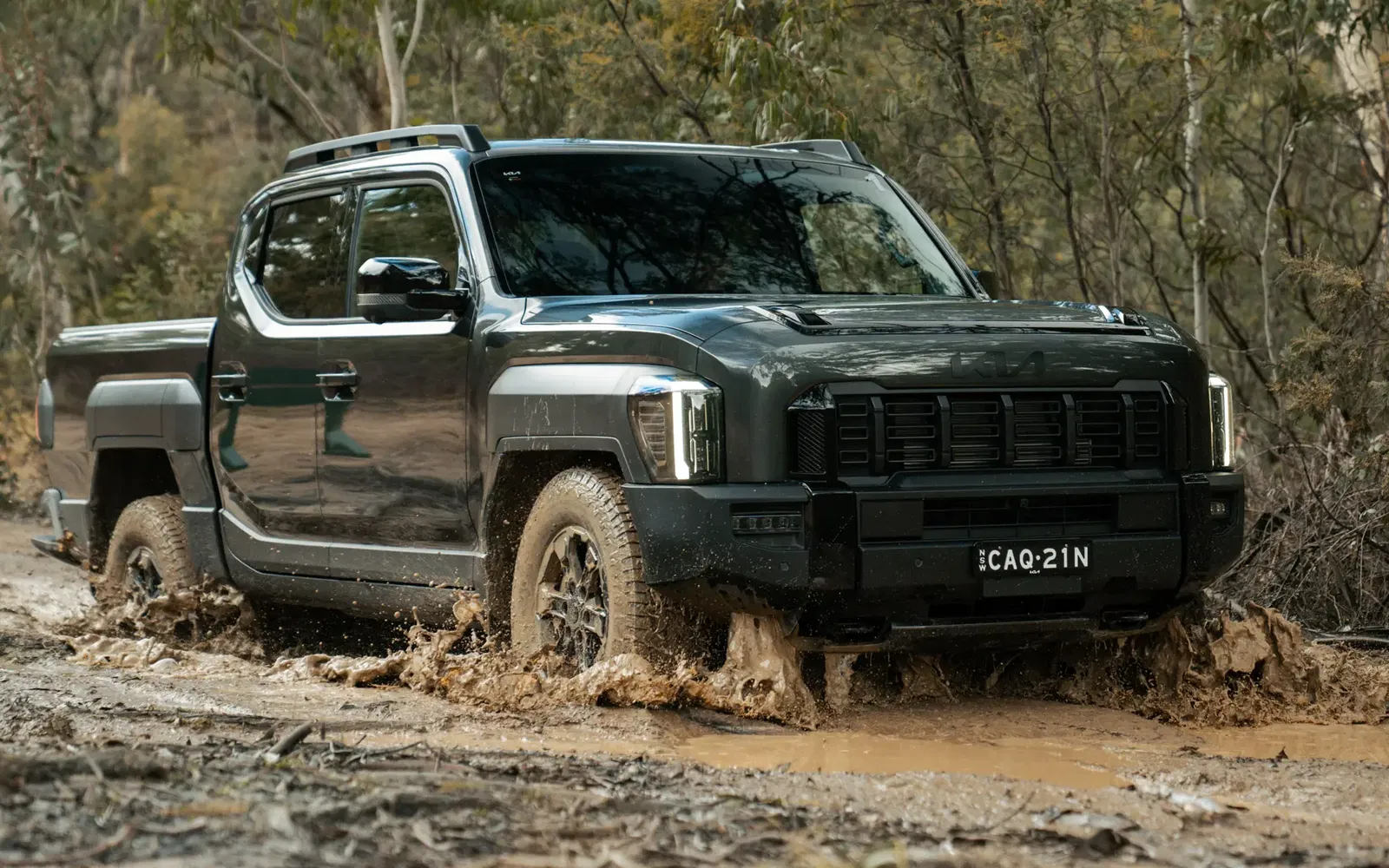
Kia’s X-Trek Mode — essentially off-road cruise control — works well on both steep descents and low-traction climbs. It modulates throttle and braking smoothly and offers five different speed settings.
The underbody camera (X-Pro only) gives an extra level of confidence when cresting blind hills or navigating tight rock gaps.
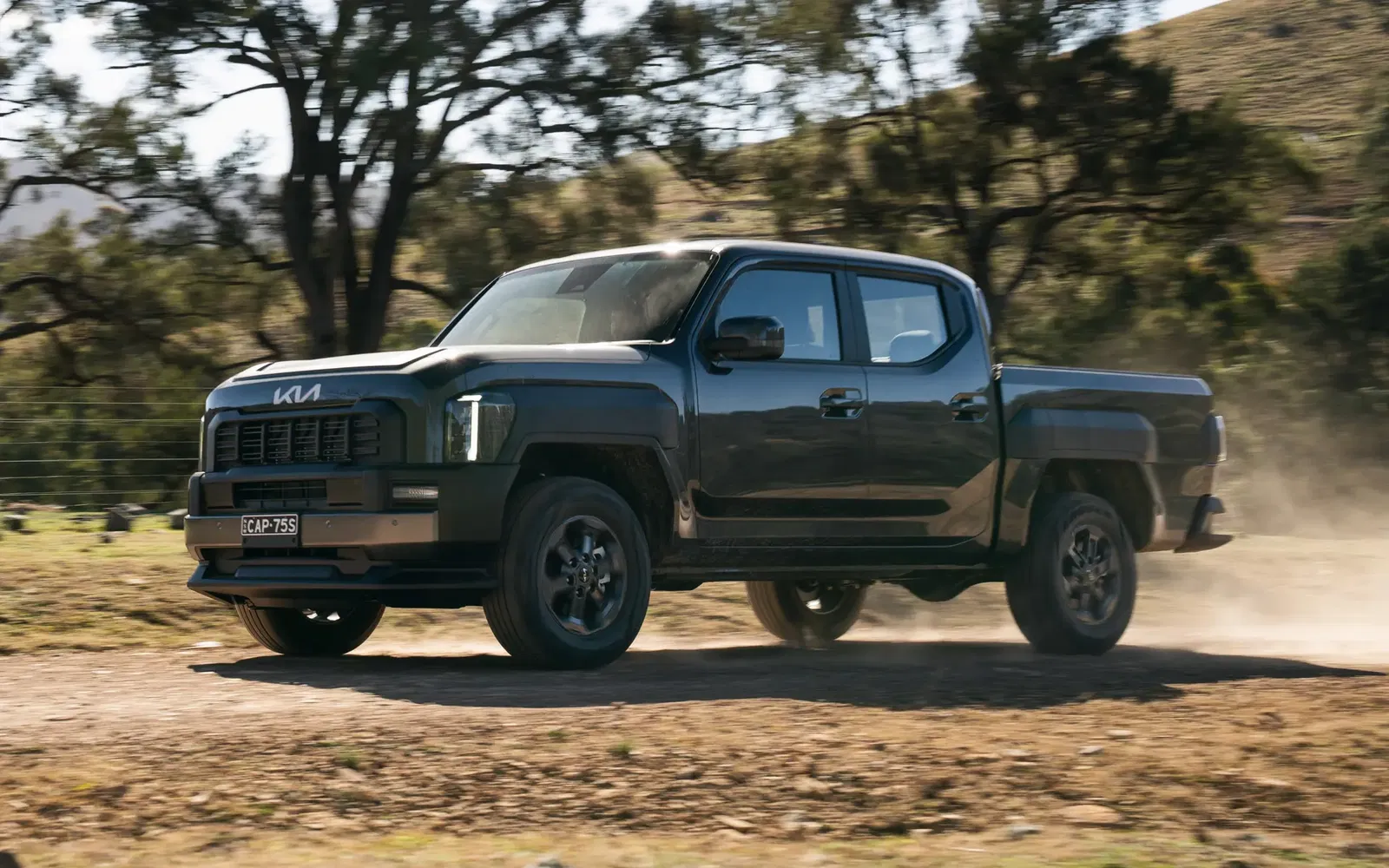
While it doesn’t offer a front locker, torque is distributed effectively across wheels through trick software-based traction control.
Water crossings were also a strong point, with the Tasman matching the Ford Ranger's 800mm wading depth.
Ultimately, the Tasman feels like a ute designed to make off-roading more accessible. Whether you’re a seasoned trail-goer or a lifestyle buyer wanting to explore without getting stuck, this is one of the more confidence-inspiring vehicles in its class.
Safety in Some Specs
The 2025 Kia Tasman received a 5-star ANCAP safety rating for 4X4 variants (excluding X-Line and X-Pro, which were not individually tested but share structural and safety features). Built from May 2025 and assessed under the latest 2023–2025 criteria, the Tasman scored:
- Adult Occupant Protection: 85%
- Child Occupant Protection: 85%
- Vulnerable Road User Protection: 74%
- Safety Assist: 80%
Standard safety tech across all variants includes:
- Dual frontal, side chest, side head (curtain), and centre airbags
- Autonomous emergency braking (AEB) with pedestrian and cyclist detection
- Junction assist and rear cross-traffic collision avoidance
- Lane keep assist (LKA), lane departure warning (LDW)
- Emergency lane keeping (ELK)
- Driver attention alert
- Rear parking sensors
- Reversing camera with dynamic guidelines
- Trailer sway control
From SX grade upwards:
- Highway Driving Assist 2 (adaptive cruise + lane centring)
- Front parking sensors
- Rain-sensing wipers
- Auto-dimming rearview mirror
From SX+ grade:
- Surround View Monitor (SVM)
- Blind Spot View Monitor (BVM)
- Rear seat air vents
X-Line and X-Pro add:
- Trailer reverse guidance
- Navigation-linked speed control
- Rear cross-traffic collision avoidance
- Underbody off-road camera (X-Pro)
- Off-road telemetry and safety profile storage (X-Pro)
Important Note: Child restraint installation in the second row is limited due to the absence of a top tether point in the centre position.
Pulls Its Weight
The Tasman supports a braked towing capacity of 3500kg across all variants, backed by a Gross Combined Mass (GCM) of 6200kg and a Gross Vehicle Mass (GVM) of 3250kg.
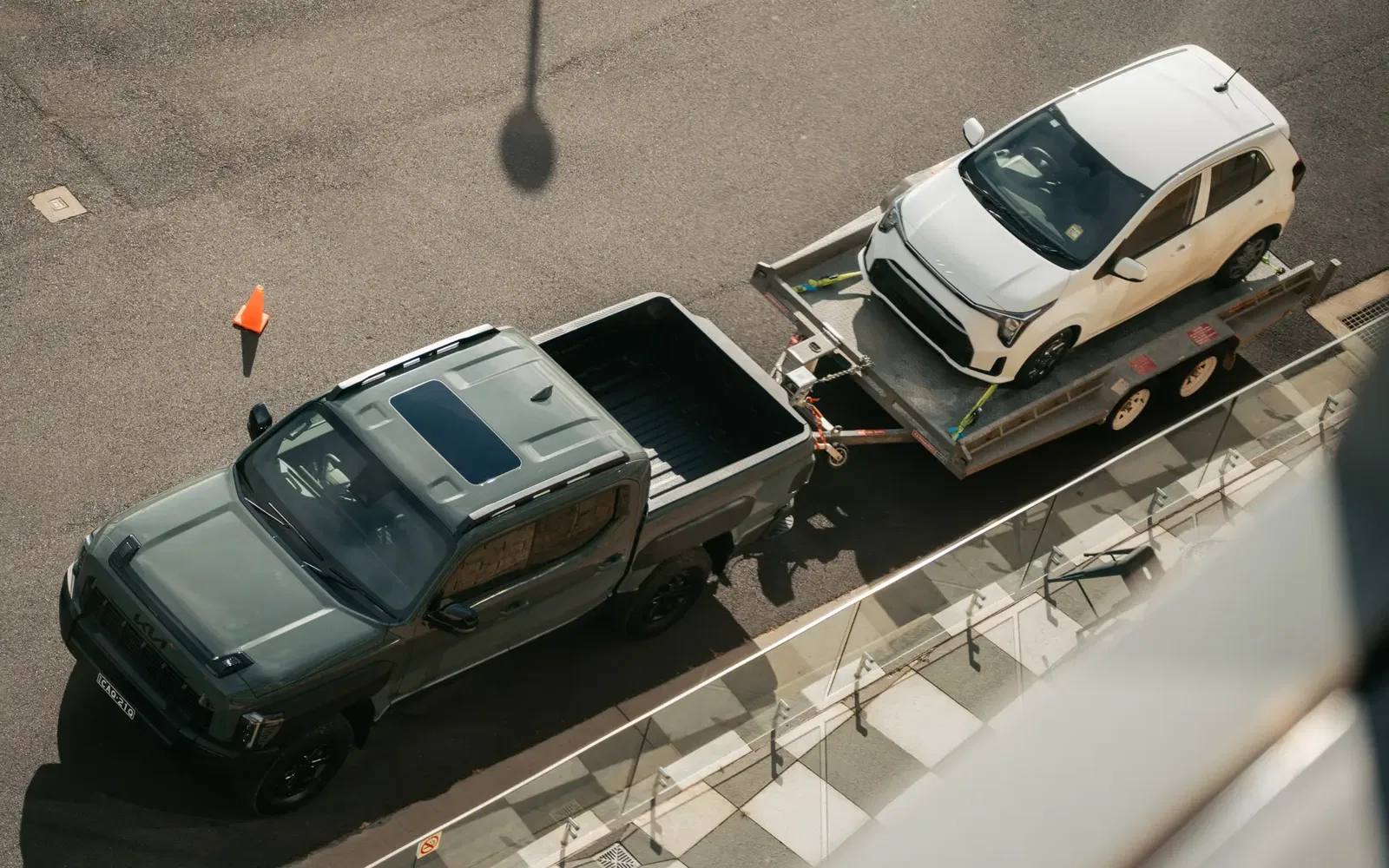
This places it firmly among the top performers in the class for towing, and the fact that even the base 4X2 S can tow the full 3500kg braked sets the Tasman apart from competitors that reserve maximum towing for pricier grades.
Towing aids are comprehensive: all grades come standard with trailer sway control, while the X-Line and X-Pro grades go a step further by adding a Tow Mode function. This Tow Mode alters the throttle response and transmission shift logic to provide more stable and predictable performance under load, especially during hill climbs or overtaking.
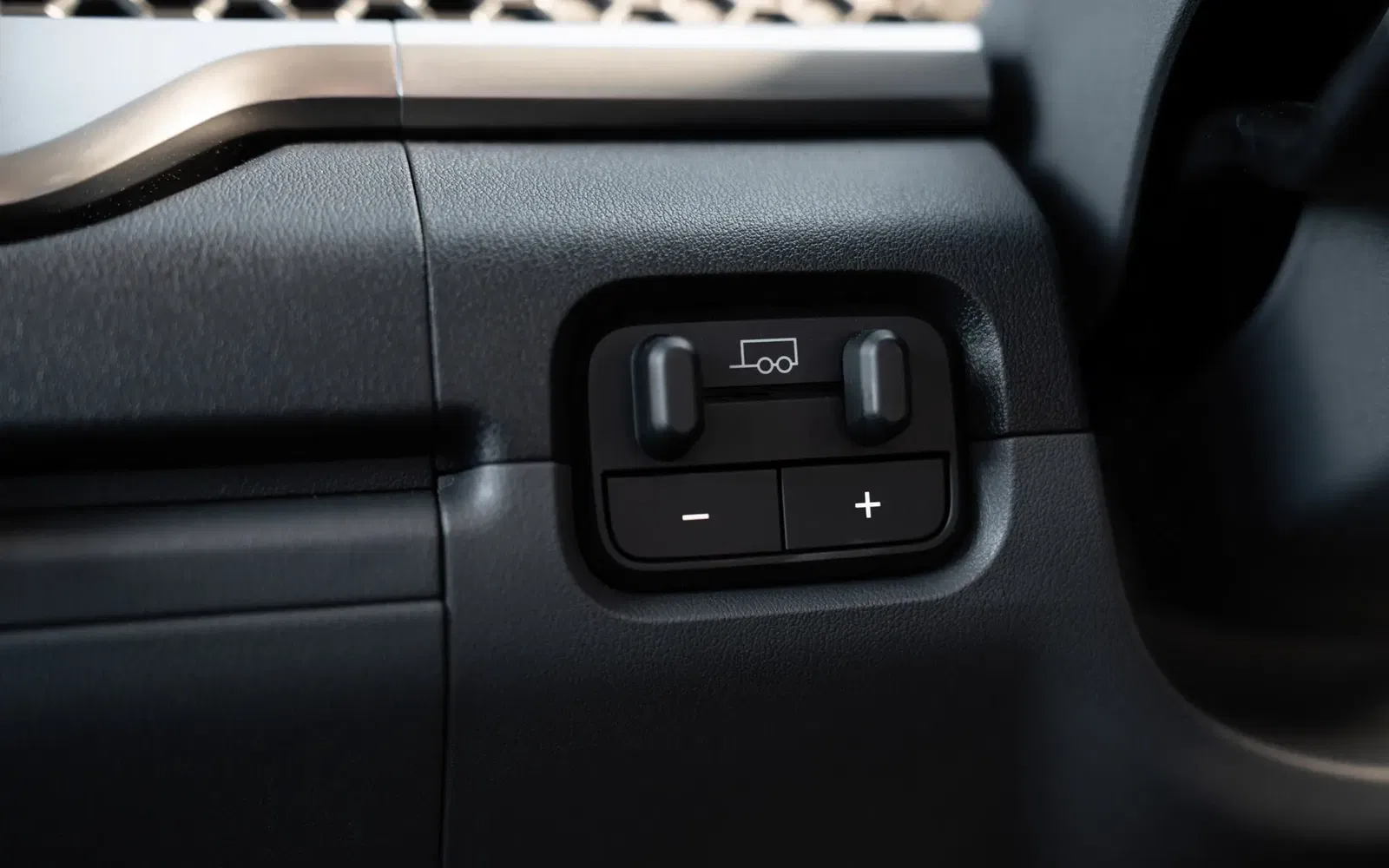
Payload varies depending on specification, ranging from 1124kg in the S 4X2 down to 1012kg in the X-Pro.
Overall, the Tasman delivers the essential numbers and smart tech needed to satisfy serious towing needs without requiring you to go all the way for the top spec.
Ownership Costs
Kia’s standard 7-year unlimited kilometre warranty applies to all Tasman models, including the full range of factory accessories, which are also covered under warranty. Capped-price servicing ensures predictable maintenance costs over the life of the vehicle, while roadside assistance is also included for the duration of the warranty period.
Capped-price servicing for the 2.2-litre diesel engine varies slightly by variant. For example:
- Tasman 4x2: Services range from $361 to $803, with the total cost over 105,000km at approximately $4,402
- Tasman X-Pro 4x4: Individual services range from $361 to $821, totalling roughly $4,393
- Tasman 4x4 (non-X-Pro): Service costs range from $361 to $937, with a higher total of $4,526
Kia also offers pre-paid servicing packages:
- 3 years: $1,371–$1,551
- 5 years: $2,718–$2,809
- 7 years: $3,813–$4,095
Fuel economy figures are respectable for a large 4X4 ute, with the SX 4X4 returning an average of 8.8L/100km in mixed driving and the off-road-focused X-Pro yielding just over 11L/100km during our tests. These figures are competitive, though not class-leading, and do reflect the vehicle’s weight and torque demands. That said, the engine’s real-world efficiency — especially in urban and towing conditions — will be a point of consideration for buyers evaluating long-term running costs.
What do you get with the Kia Tasman?
Tasman S (4X2 and 4X4)
- 2.2L turbo-diesel engine (154kW/440Nm)
- 8-speed automatic transmission
- Rear differential lock (4X4 only)
- 17-inch steel wheels
- Halogen headlights
- Dual-zone climate control
- Cloth seats
- 12.3-inch digital instrument cluster
- 12.3-inch infotainment touchscreen
- Wireless Apple CarPlay & Android Auto
- Reversing camera with dynamic guidelines
- AEB with pedestrian/cyclist detection
- Trailer sway control
- Rear parking sensors
- Full-size spare wheel

Tasman SX (4X4 only)
Adds over S:
- 17-inch alloy wheels
- LED headlights
- Front fog lights
- Power-folding side mirrors
- Heated front seats
- Satellite navigation with live traffic
- Terrain drive modes
- Rain-sensing wipers
- Front parking sensors
- Auto-dimming rearview mirror
- Remote engine start
- Highway Driving Assist 2

Tasman SX+ (4X4 only)
Adds over SX:
- 18-inch alloy wheels
- Rear seat air vents
- Dual 240V power outlets (1 in cabin, 1 in tub)
- Wireless smartphone charging pad
- Ambient lighting
- Tub liner
- Smart key with push-button start
- Digital key functionality
Tasman X-Line (4X4 only)
Adds over SX+:
- Leather-appointed seats
- Sliding and reclining rear seatbacks
- Heated rear seats
- Dual wireless smartphone chargers
- Blind-Spot View Monitor (BVM)
- Surround View Monitor (SVM)
- Trailer reverse guidance
- Ventilated front seats
- Acoustic laminated front windows
Tasman X-Pro (4X4 only)
Adds over X-Line:
- 17-inch black alloy wheels with all-terrain tyres
- X-Trek off-road drive mode (off-road cruise control)
- Harman Kardon premium audio system
- Underbody off-road camera system
- Full steel underbody protection
- Matte exterior accents
- Satin chrome grille surround
- Body-coloured wheel arch extensions
- Roof rails
- Off-road telemetry display
- Tow mode

Final Thoughts on the Kia Tasman
From a product perspective, the Kia Tasman nails many of the core expectations of dual-cab buyers — with a tough chassis, real off-road ability, and segment-matching payload and towing specs — while also going several steps further in areas often neglected by rivals.
Its interior is arguably best-in-class, with a level of tech and comfort that feels more premium SUV than tradie ute. Rear seat space and versatility are excellent, and features like reclining rear seats, dual wireless chargers, and high-resolution displays raise the bar for what buyers can expect in this segment.
On the road, the Tasman is a competent performer that prioritises comfort, stability, and noise suppression. Its ride quality is decent thanks to local chassis tuning, albeit definitely on the stiffer side, and while the powertrain is far from the strongest, it remains usable and smooth for day-to-day driving and moderate towing.
Off-road, the Tasman X-Pro and X-Line deliver impressive capability with thoughtful driver aids, proving Kia wasn’t just paying lip service to 4WD credentials.
However, the sole 2.2-litre diesel engine is a limiting factor. It lacks the effortless grunt of a V6 Ranger, and its performance under load will likely leave power-hungry buyers looking elsewhere. Additionally, the top-end pricing creeps into territory usually reserved for more powerful, more established nameplates, which could make the Tasman a tough sell for those focused purely on numbers.
That said, for lifestyle-focused buyers and tradies who want a dual-cab that feels modern, comfortable, and well-thought-out — and are willing to trade some outright grunt for refinement and clever features — the Tasman is a serious contender.
Saucey rating breakdown
Saucey rating breakdown
FAQ
How fast is the Kia Tasman?
0–100km/h takes approximately 10.1 seconds, slower than key rivals.
What’s the Tasman's towing capacity?
3500kg braked across all dual-cab models with 6200kg GCM.
Does it have off-road assist features?
Yes – X-Trek off-road cruise, underbody camera, terrain modes, and rear diff lock (X-Line and X-Pro).
Sign up to our newsletter
Be the first to know when we drop new car reviews.
.avif)



